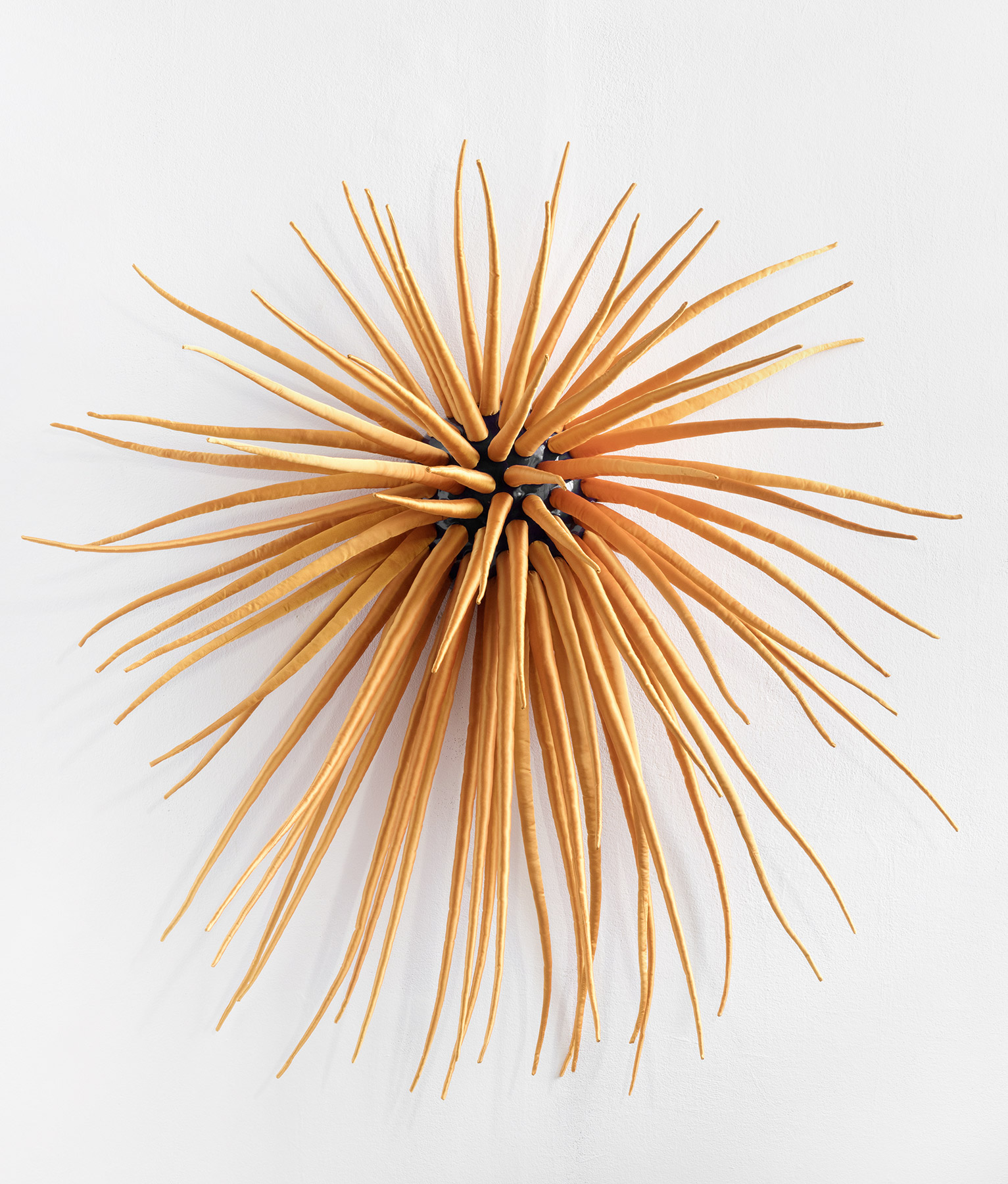
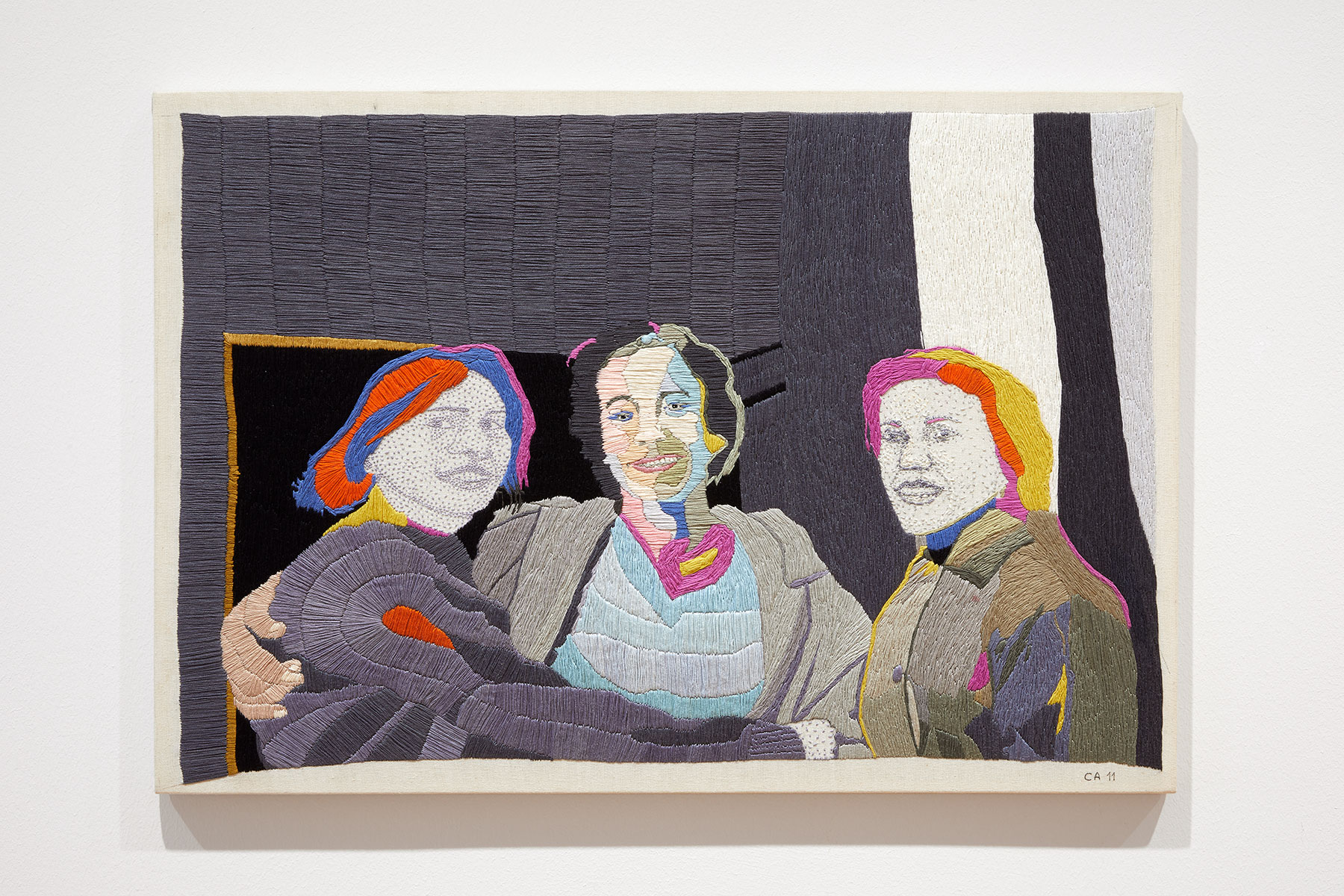
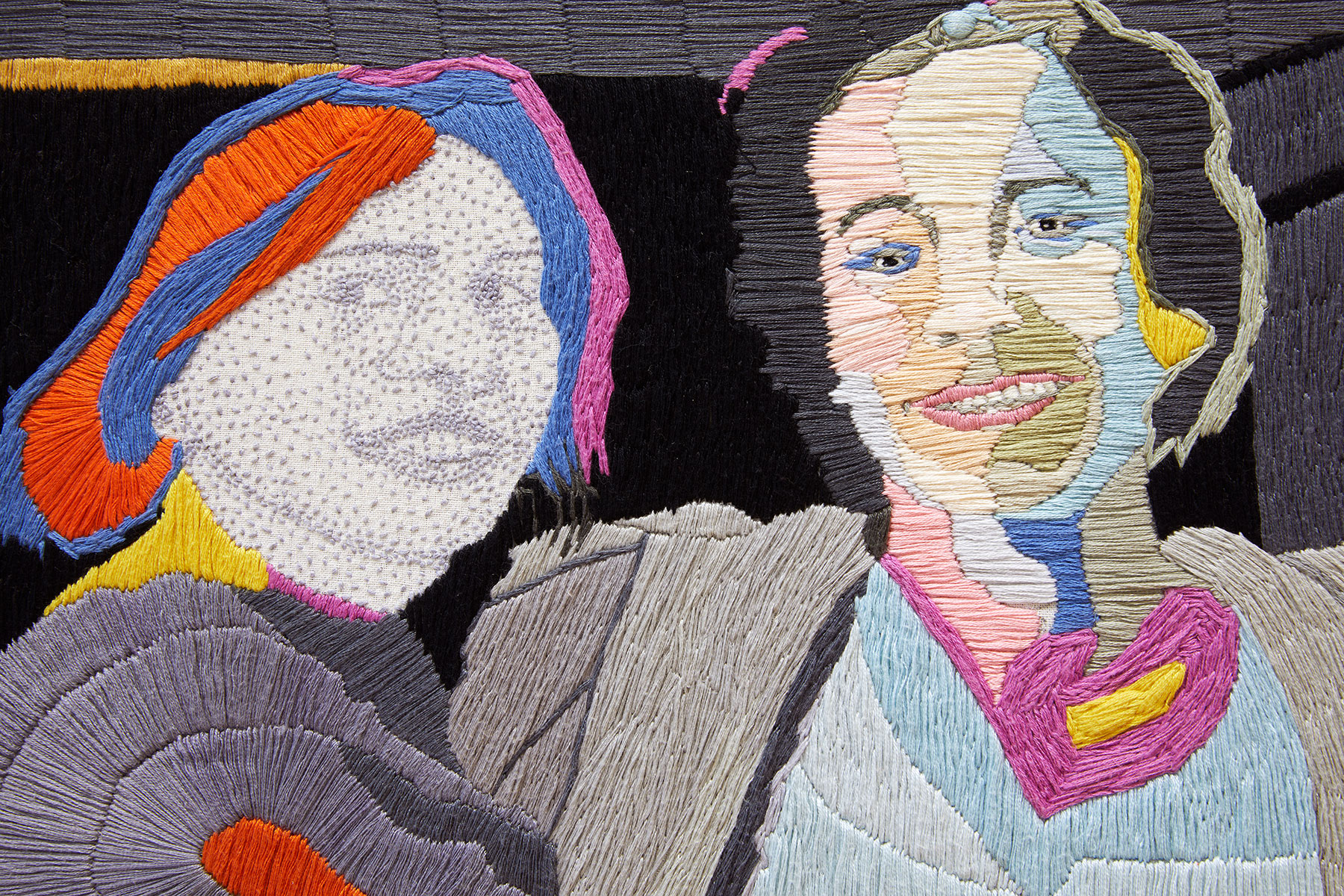
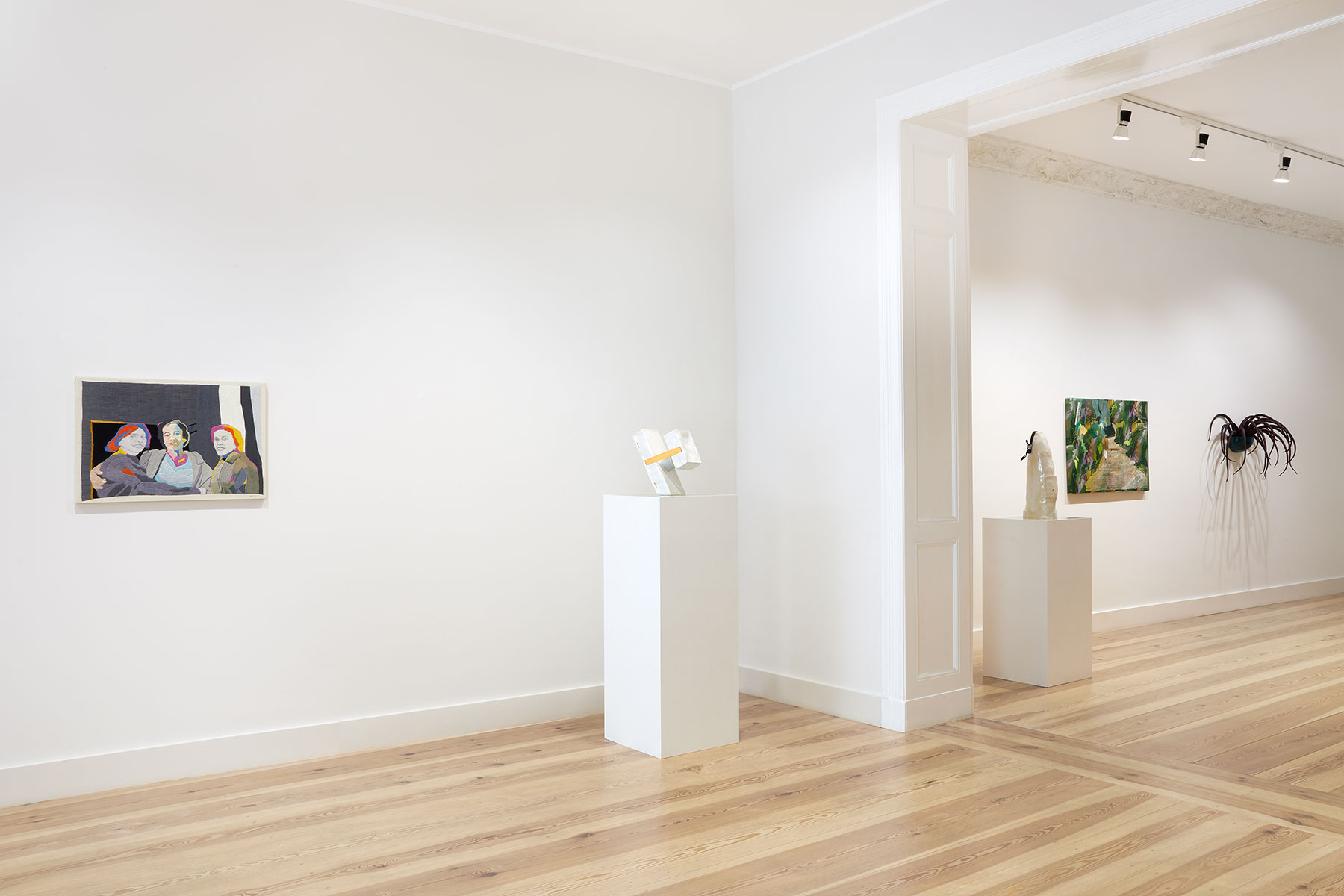
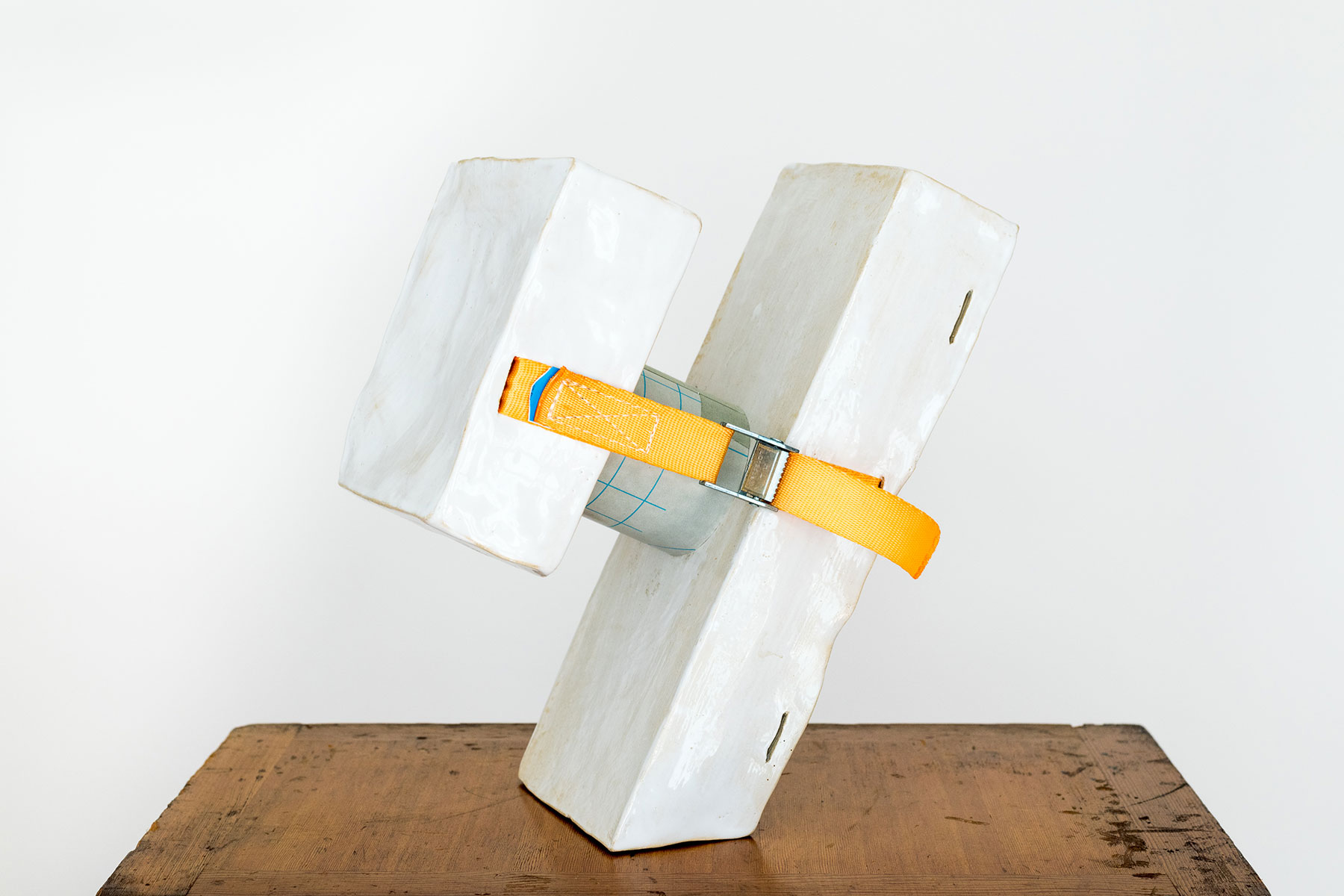
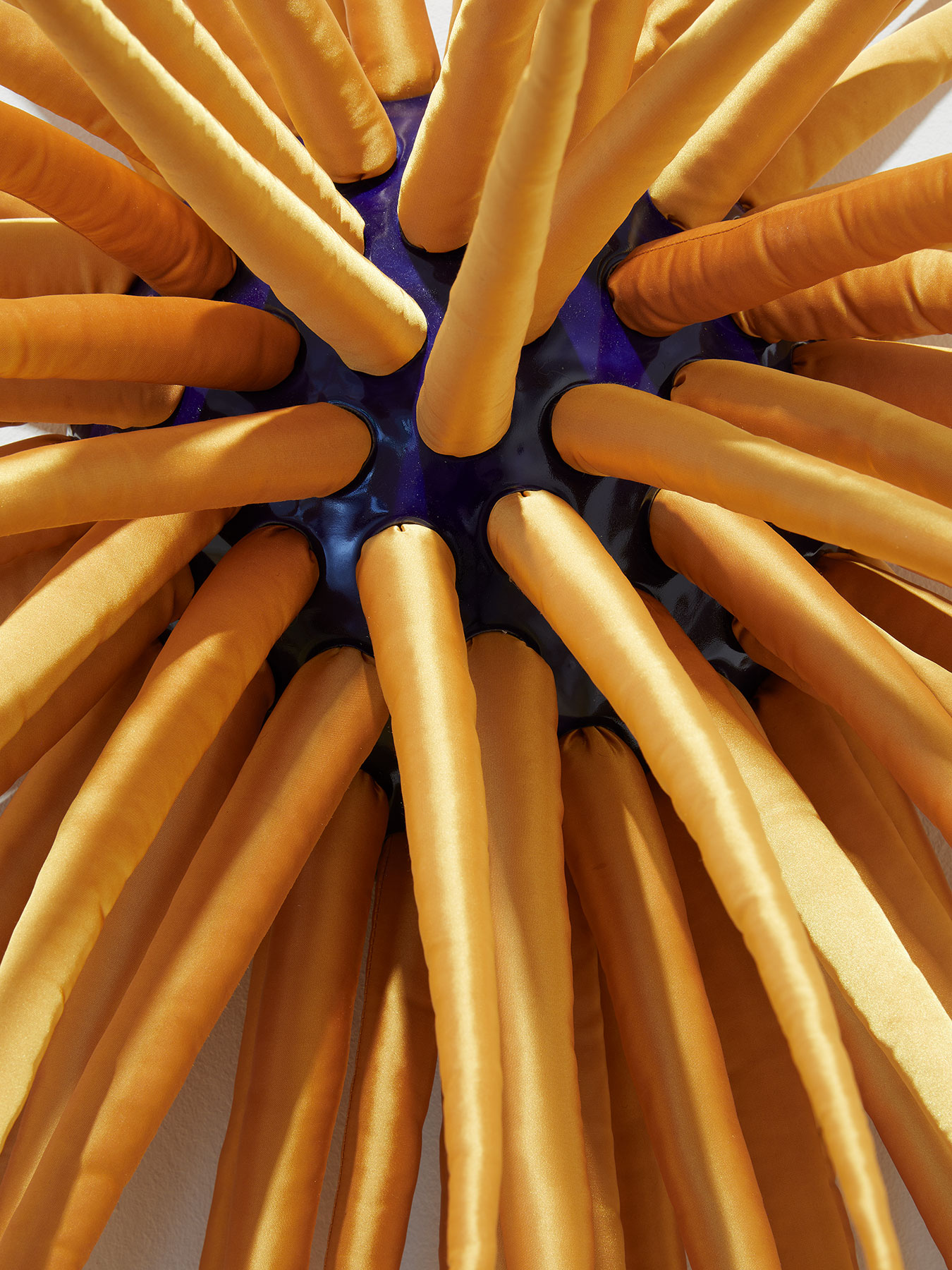
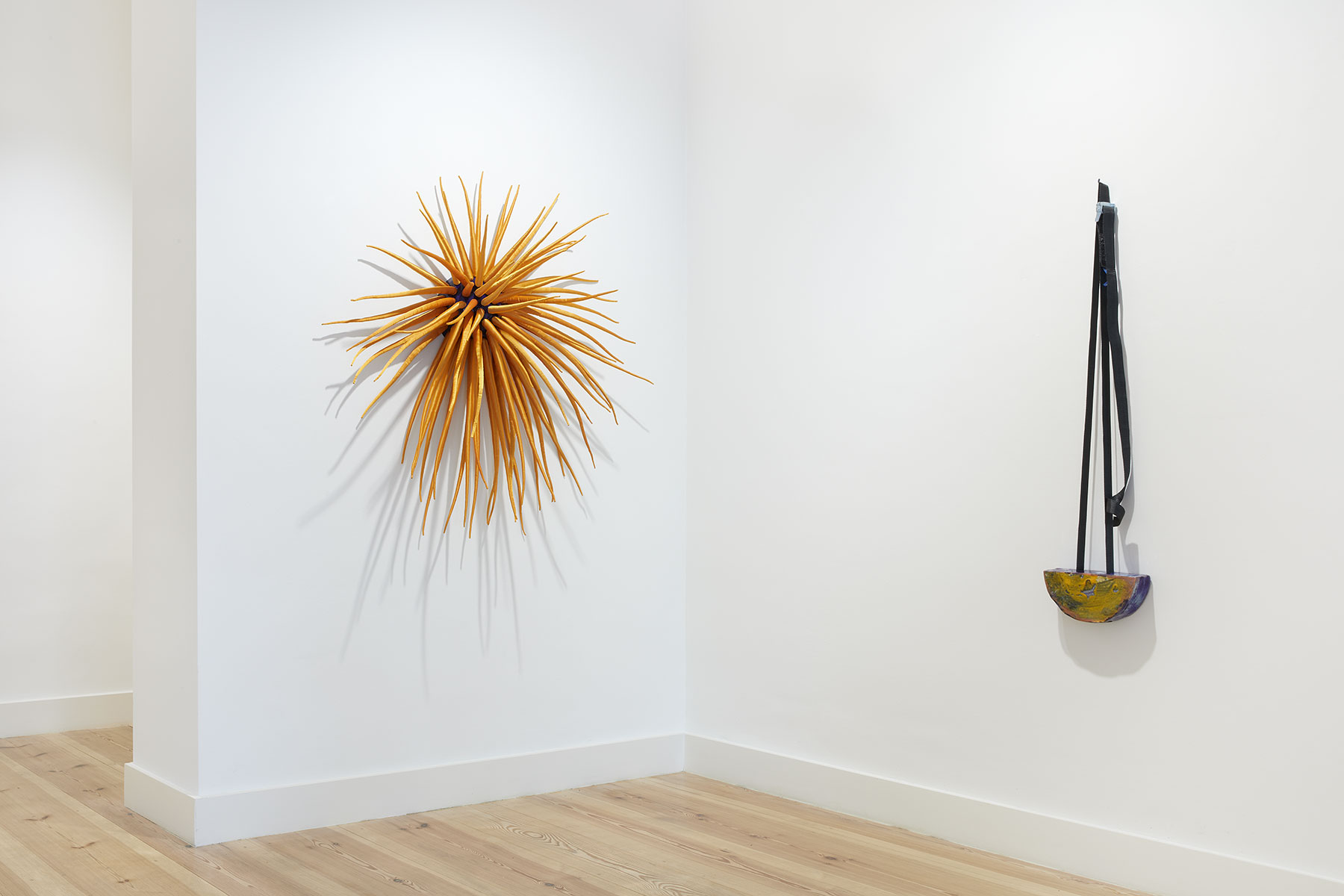
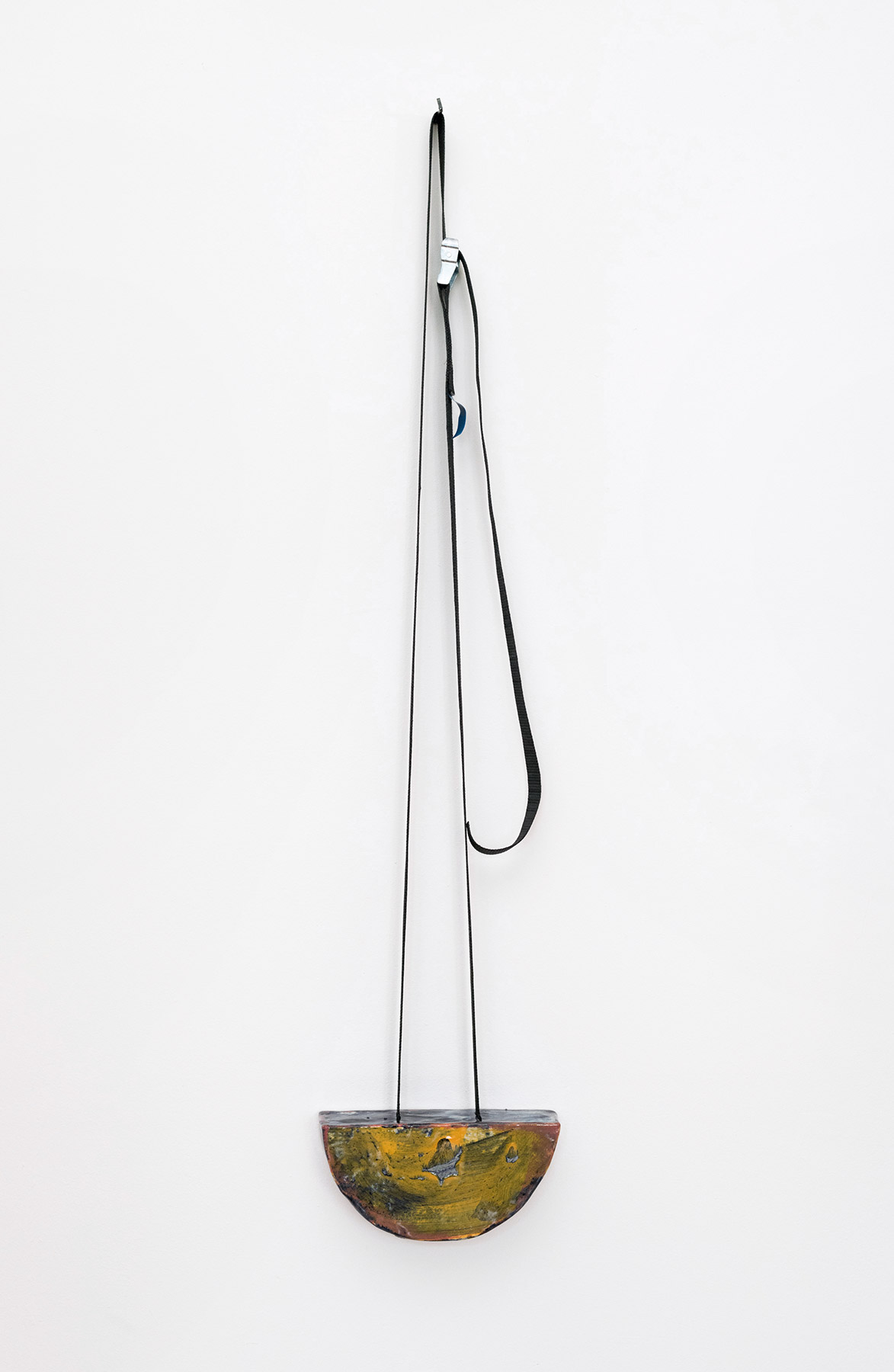
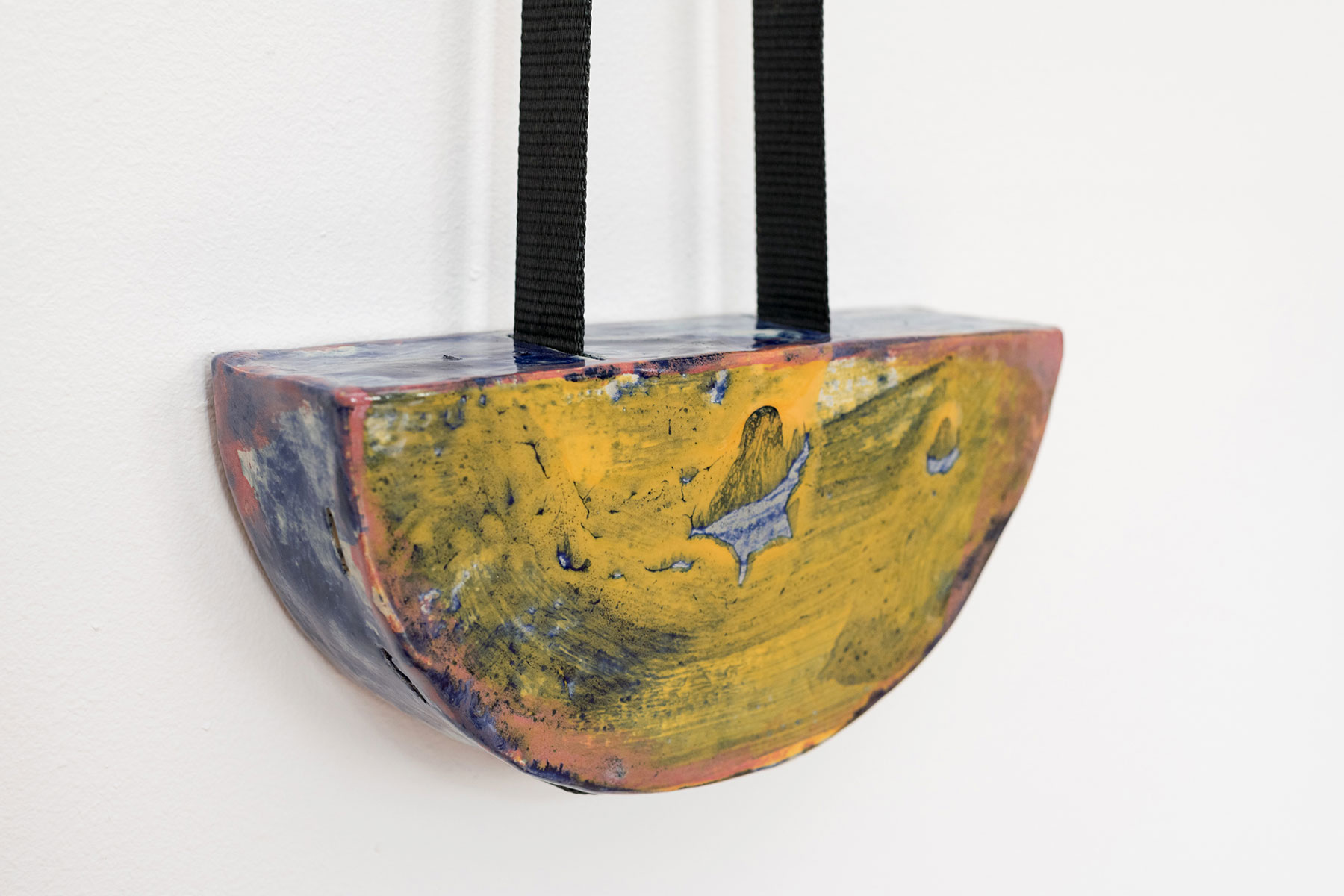
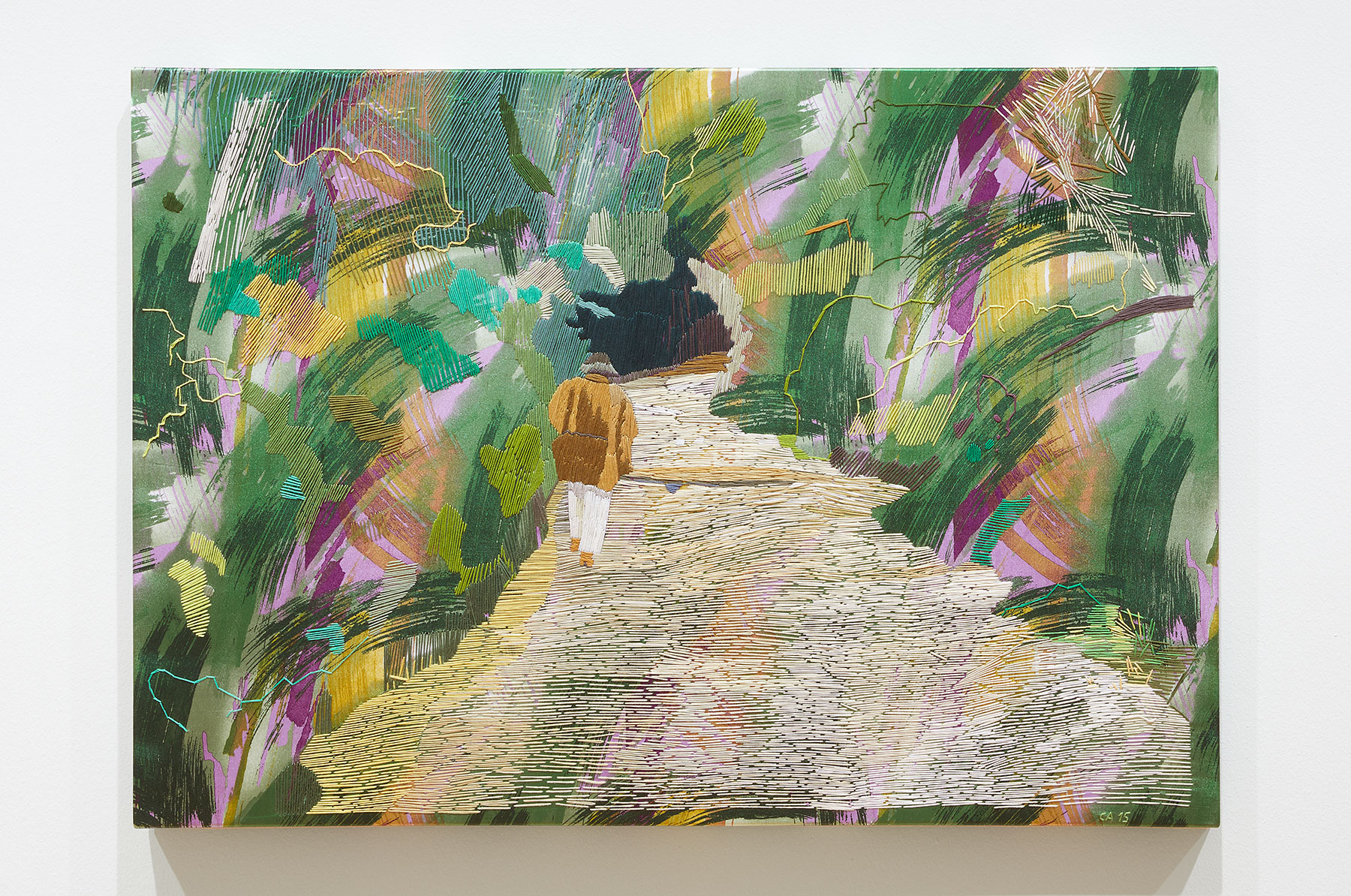
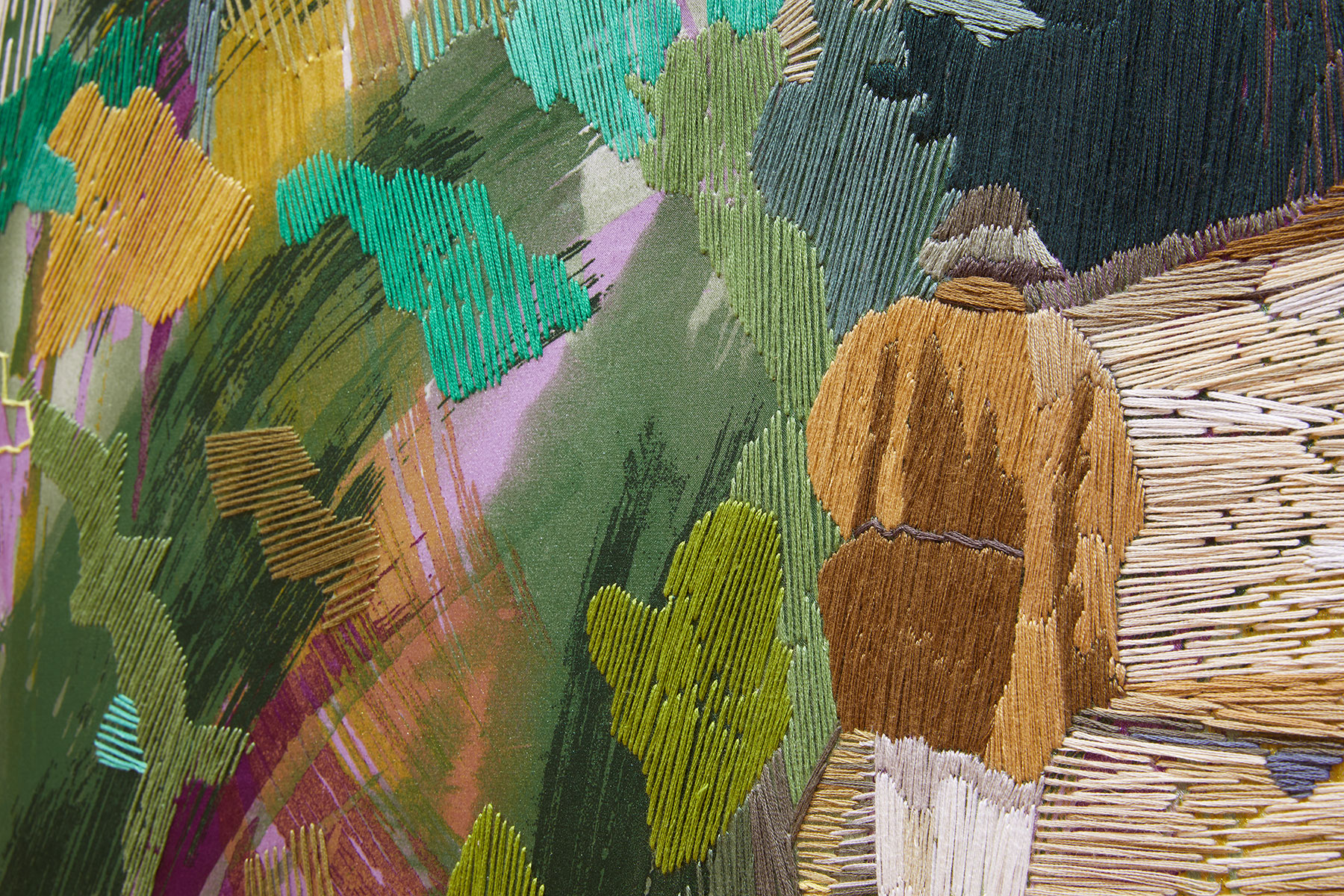
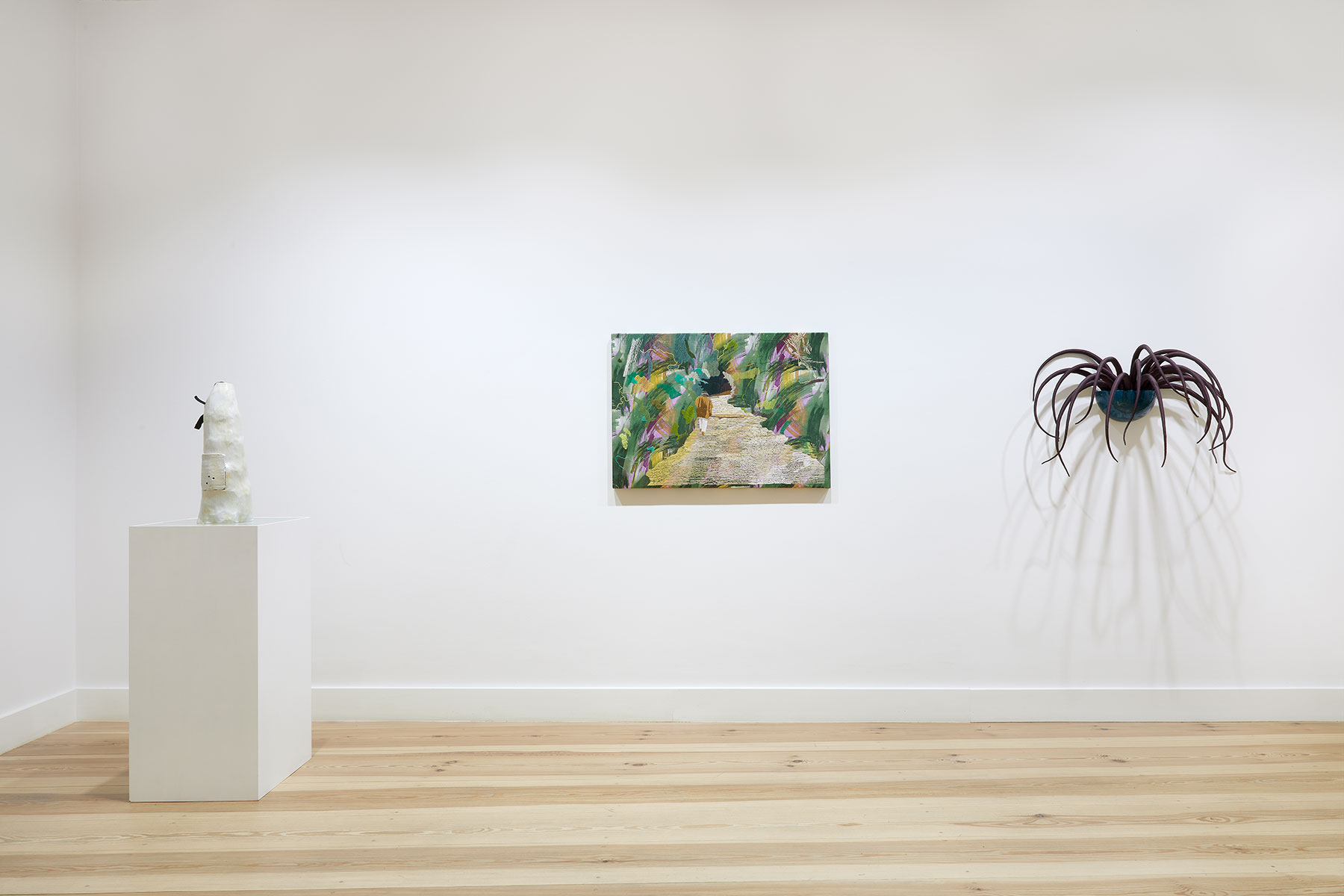
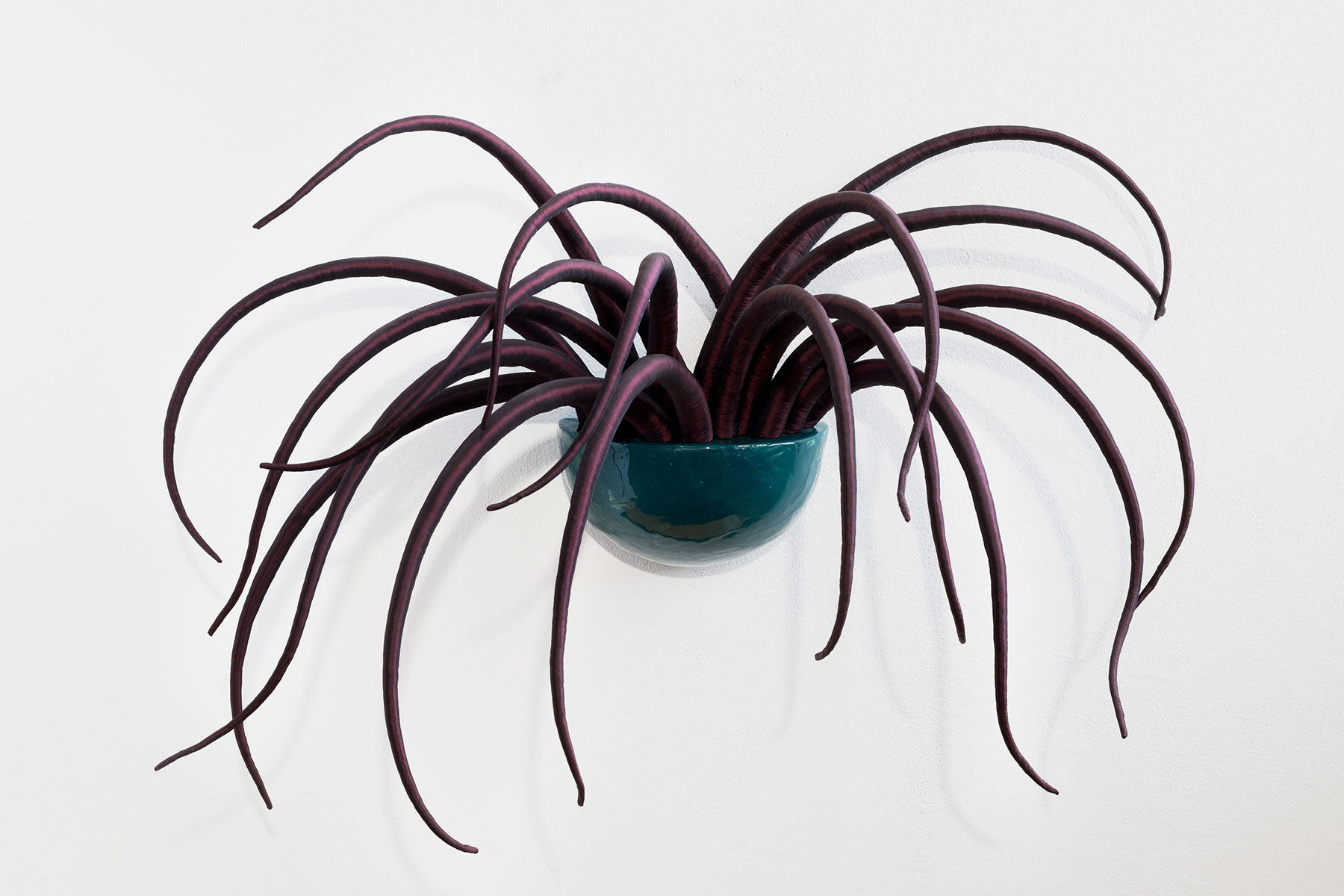
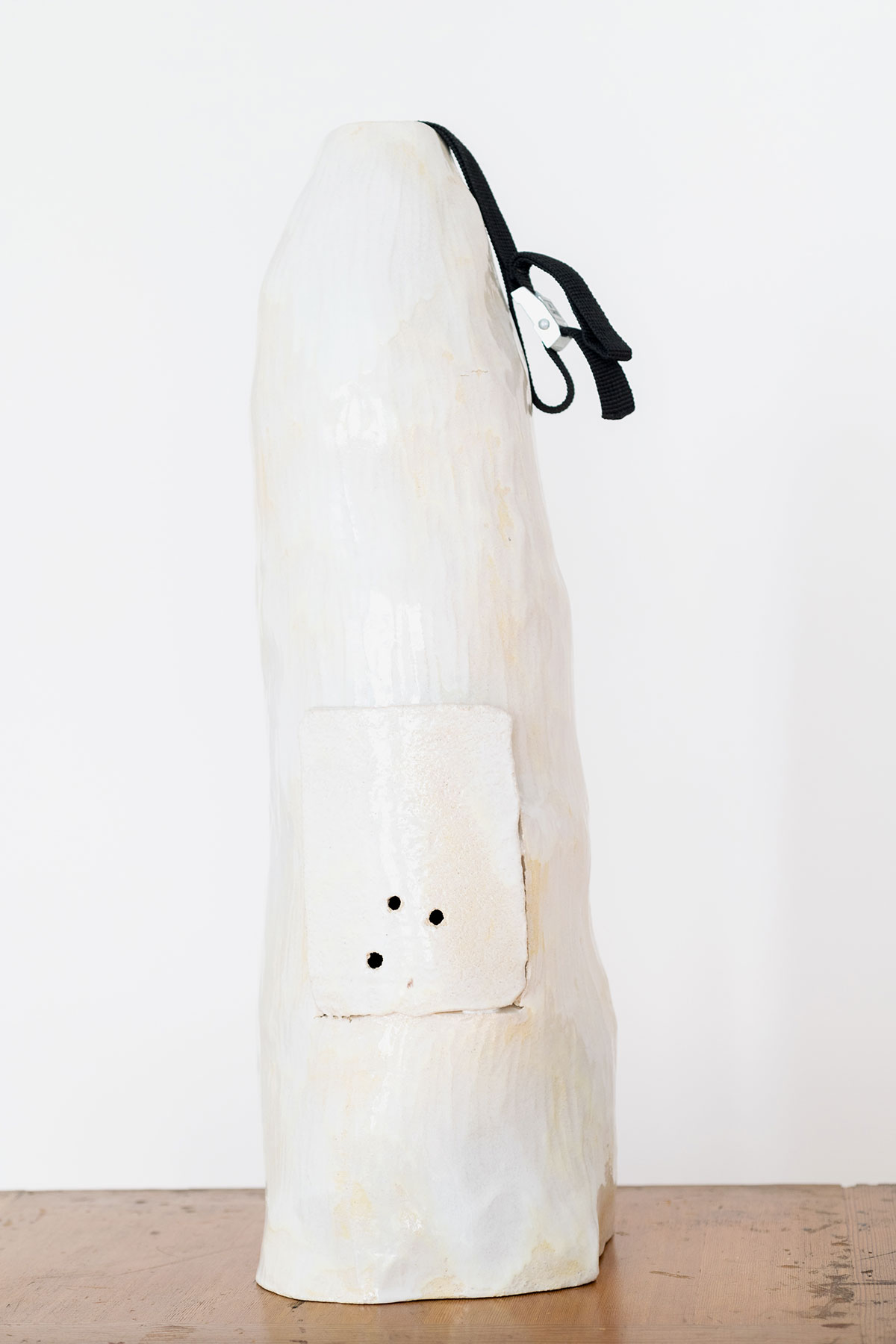
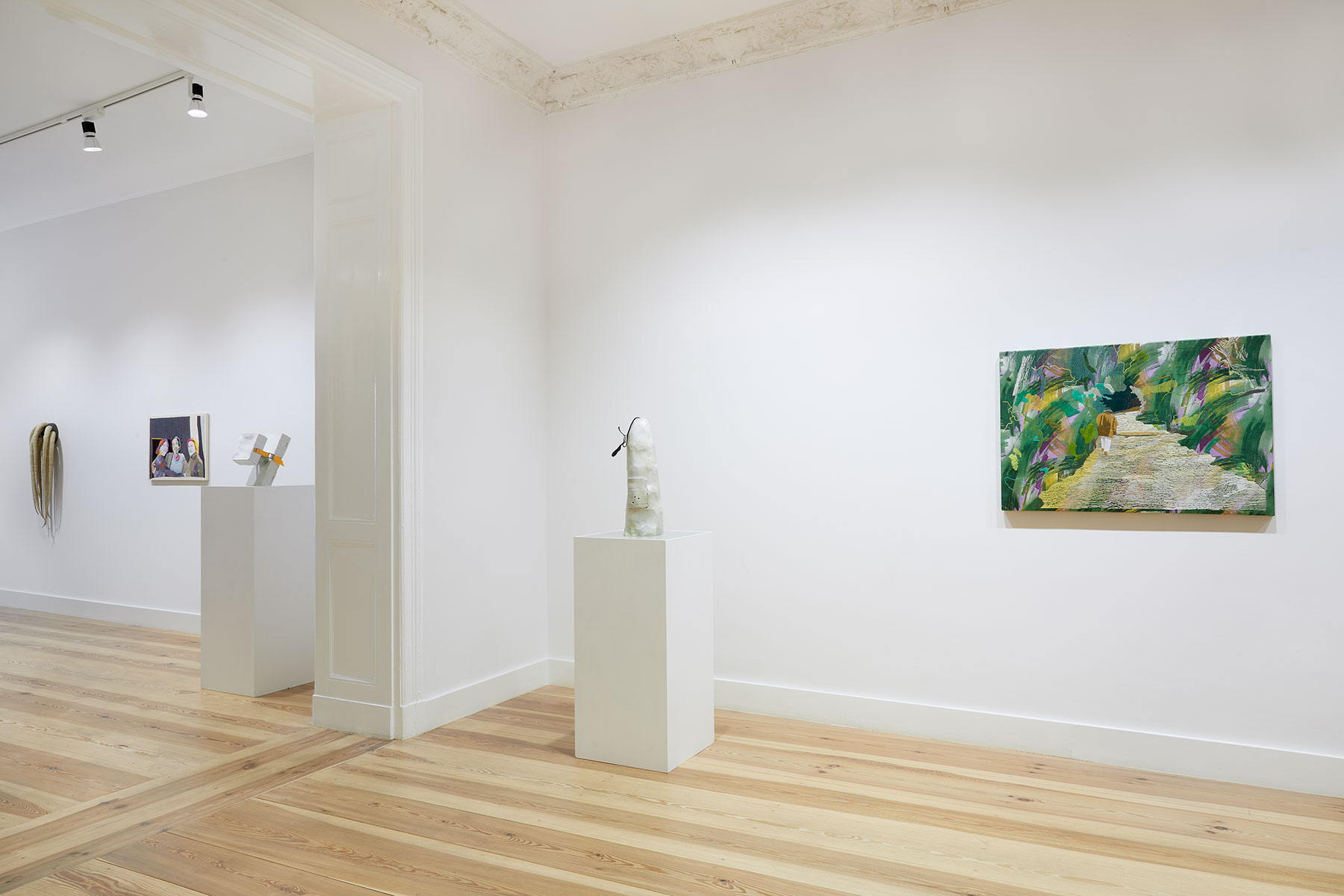
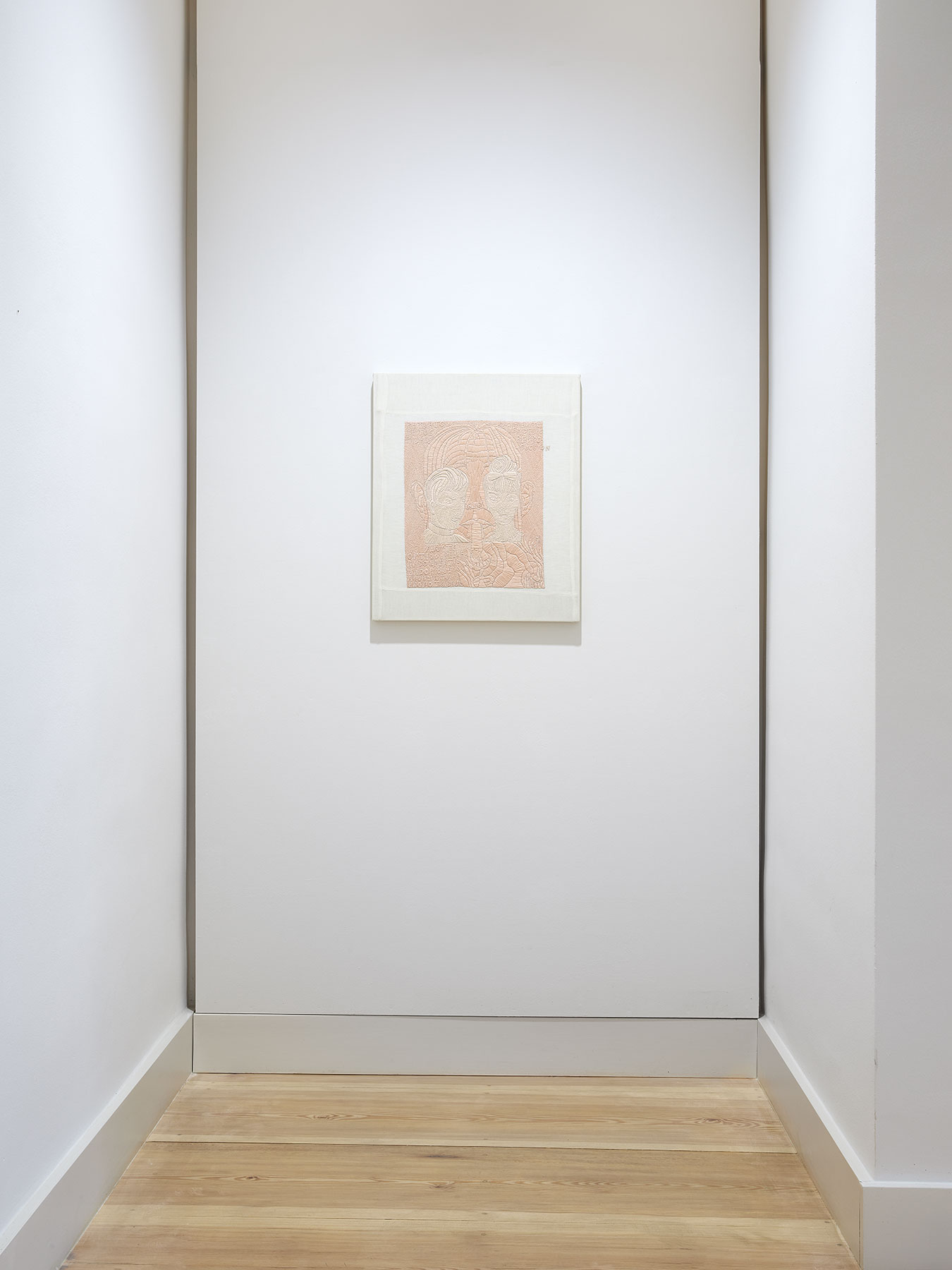
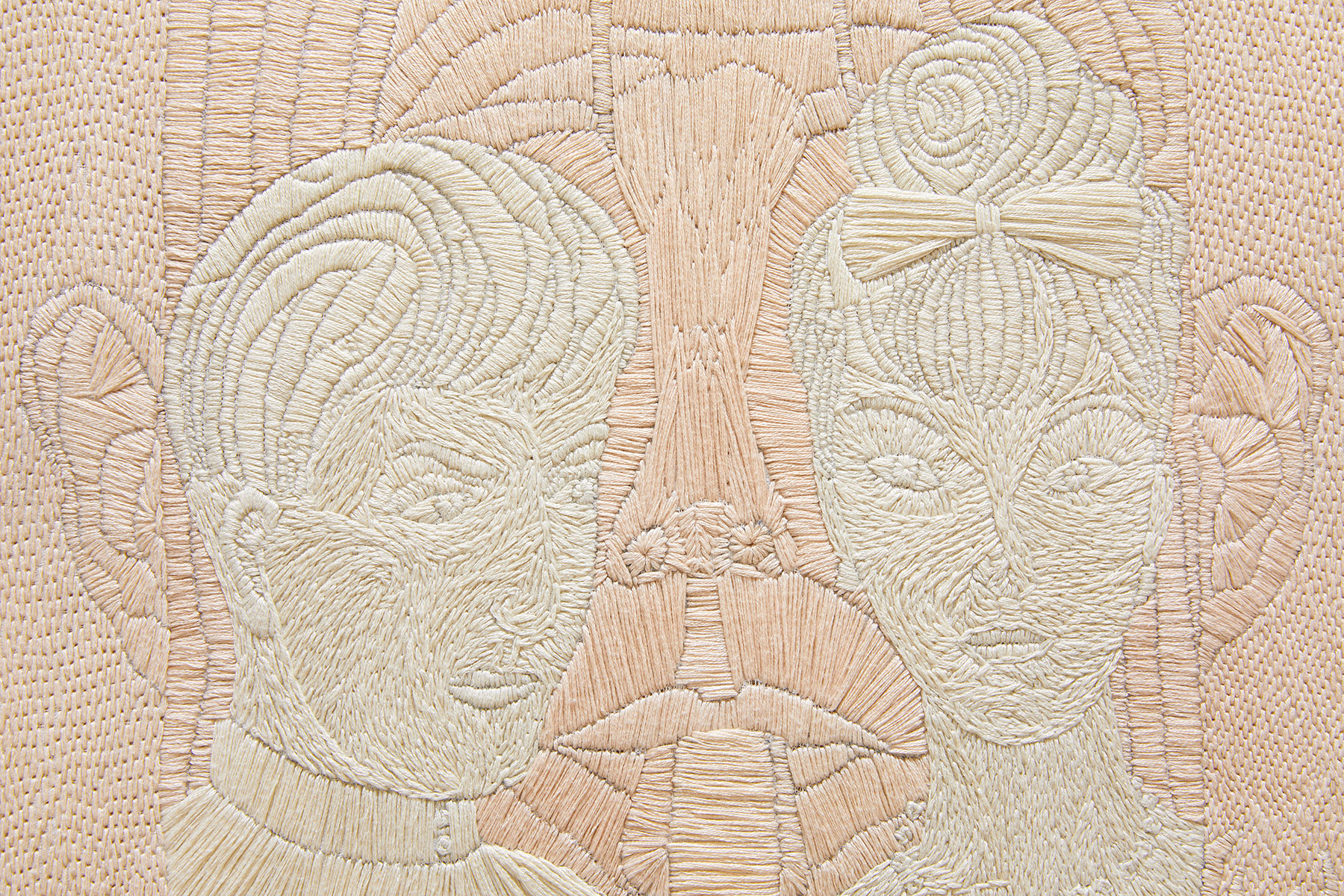
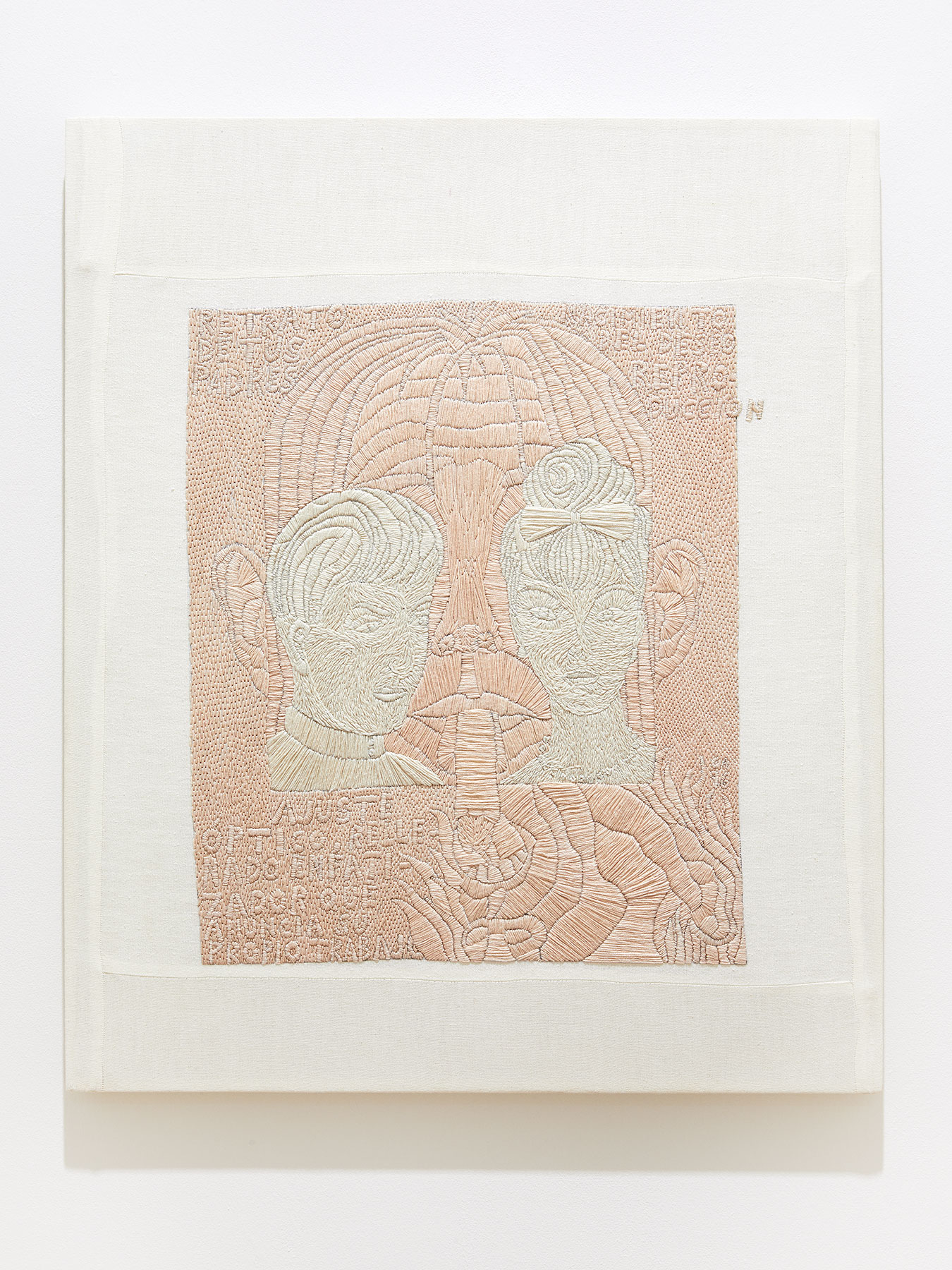
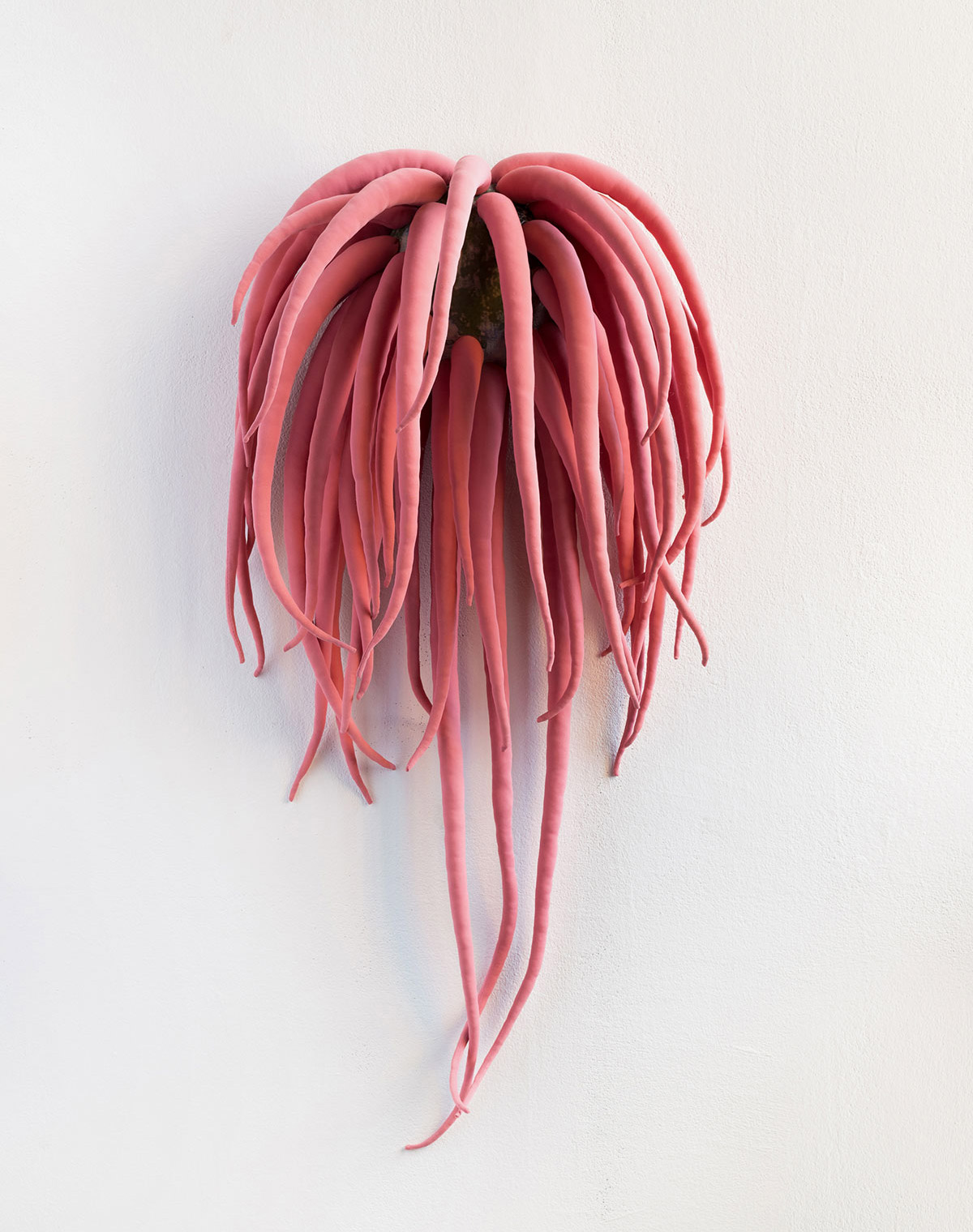
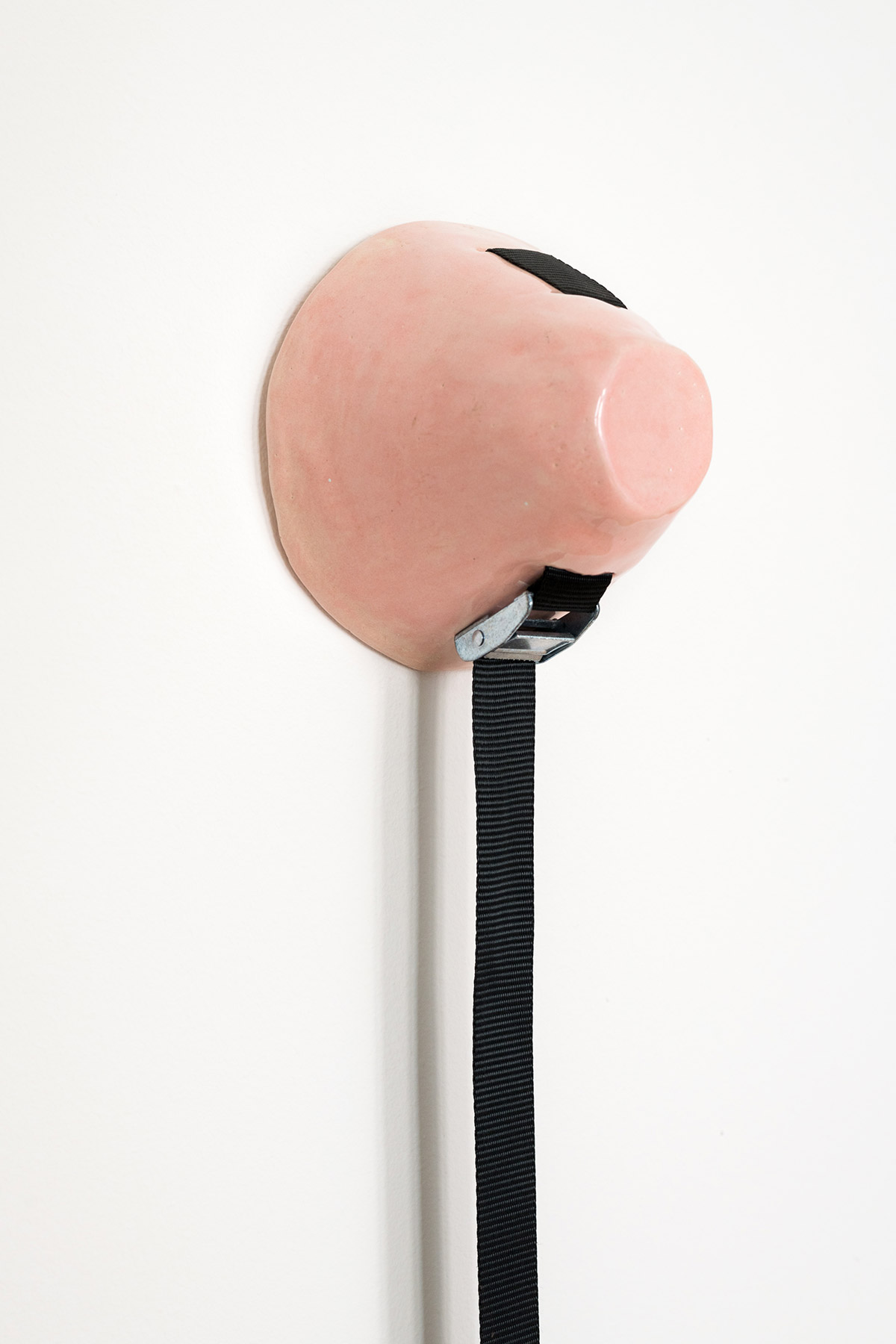
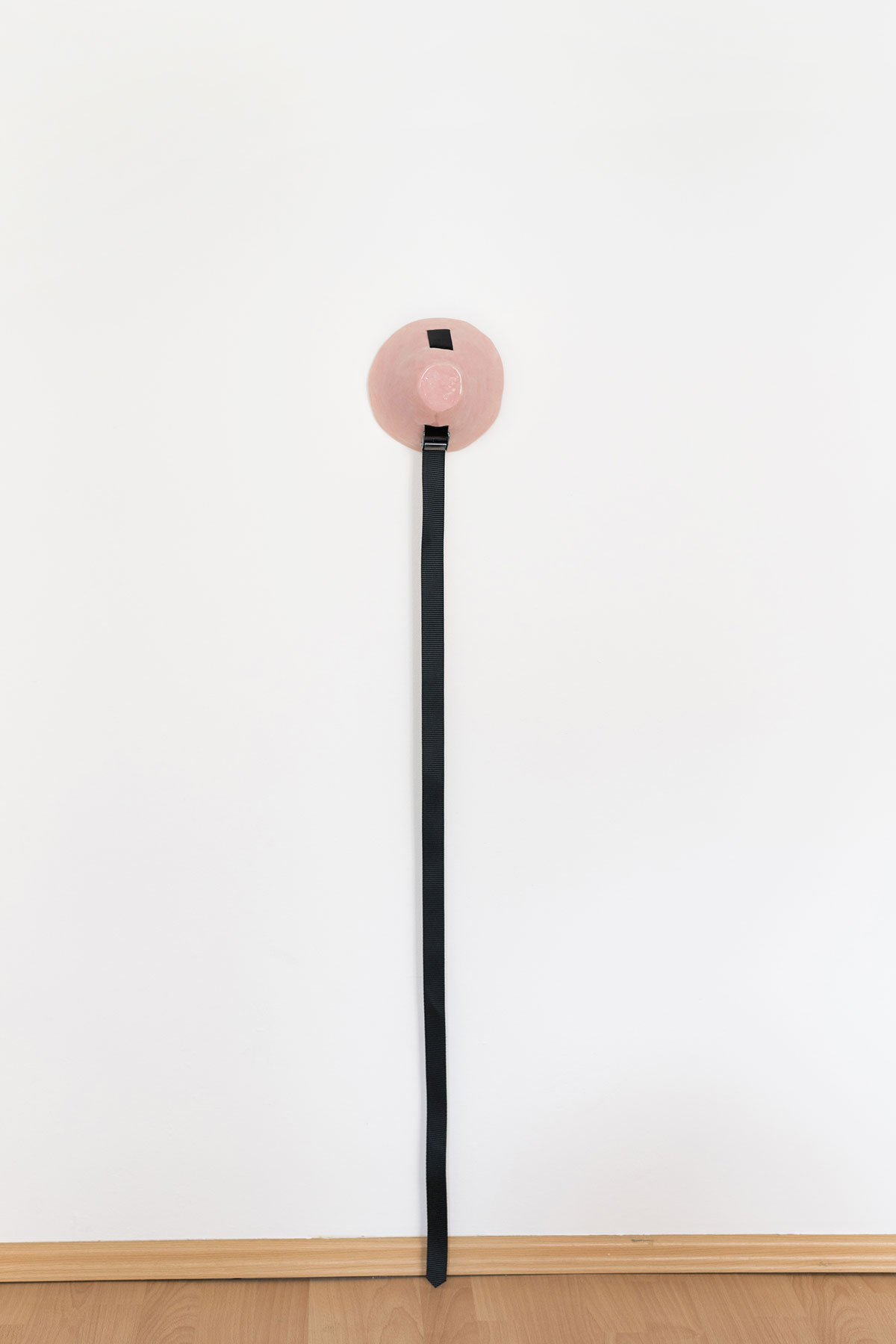
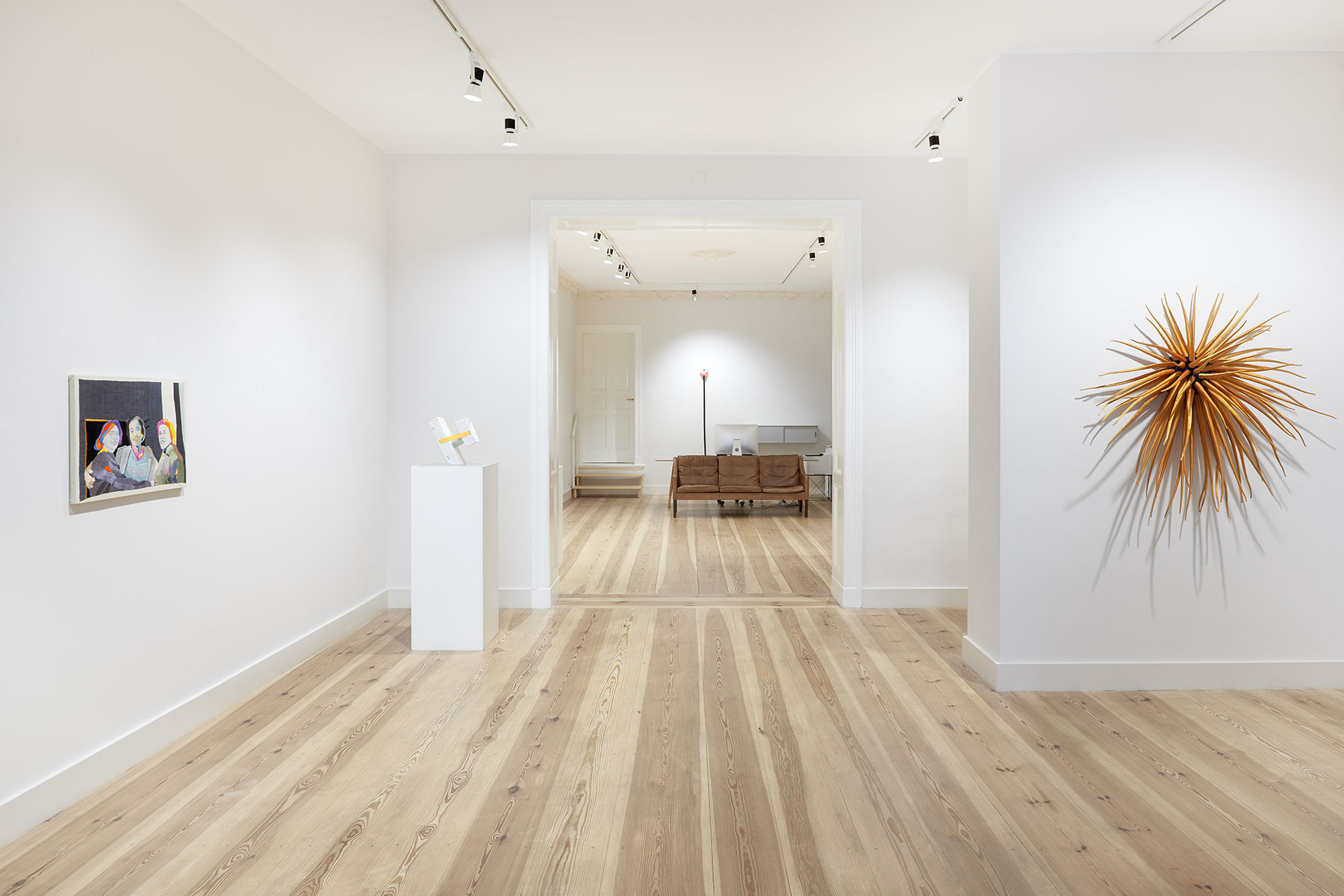
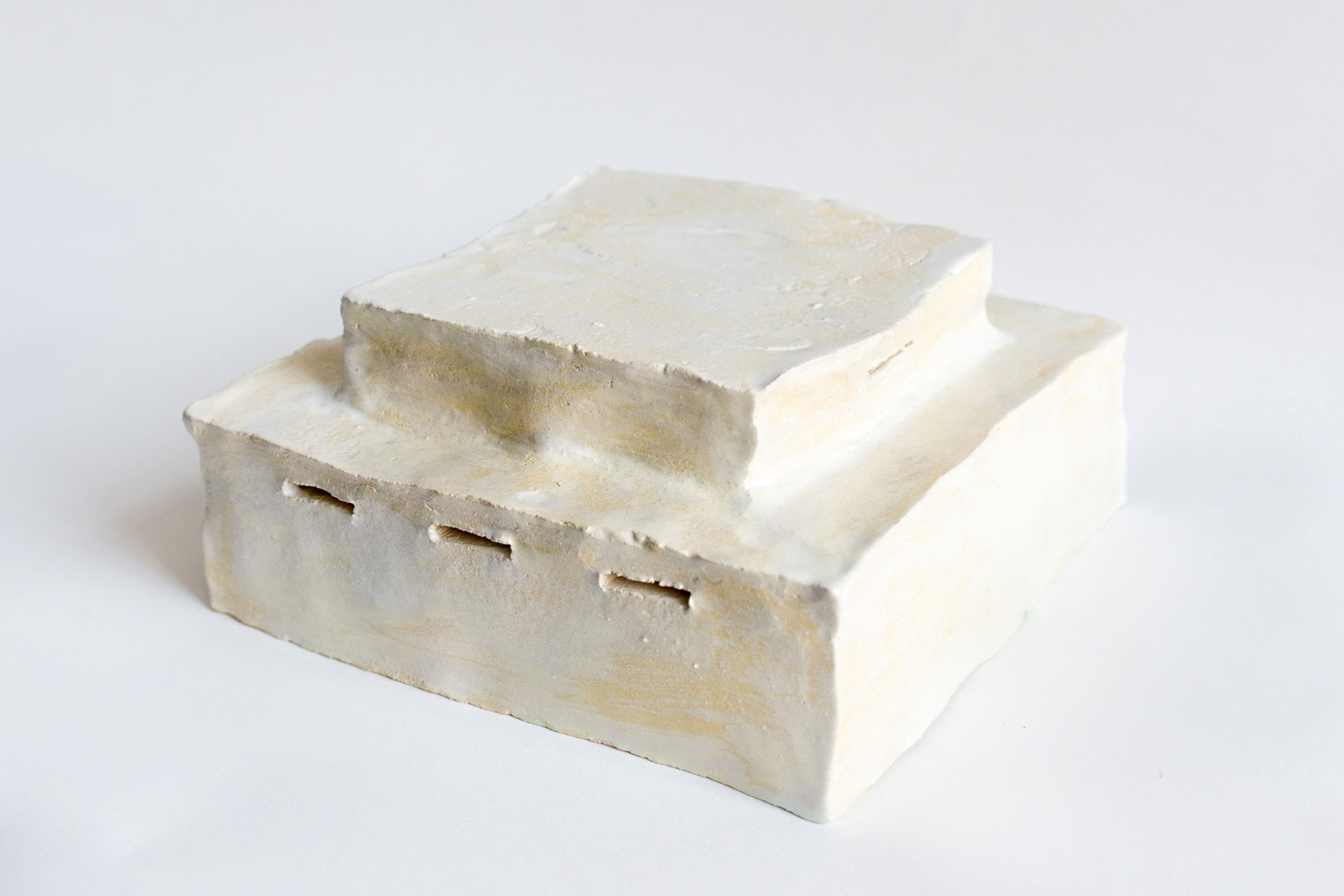
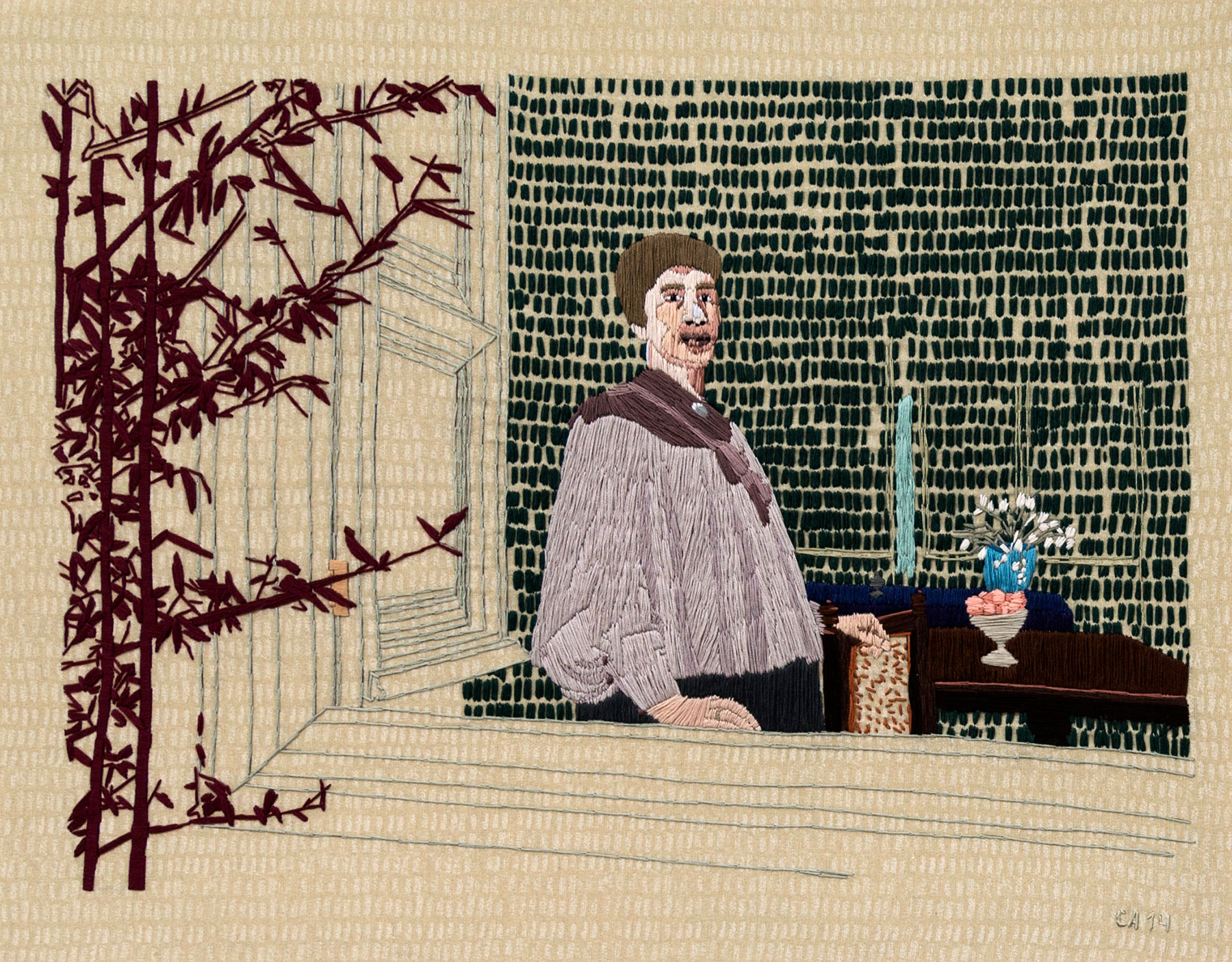
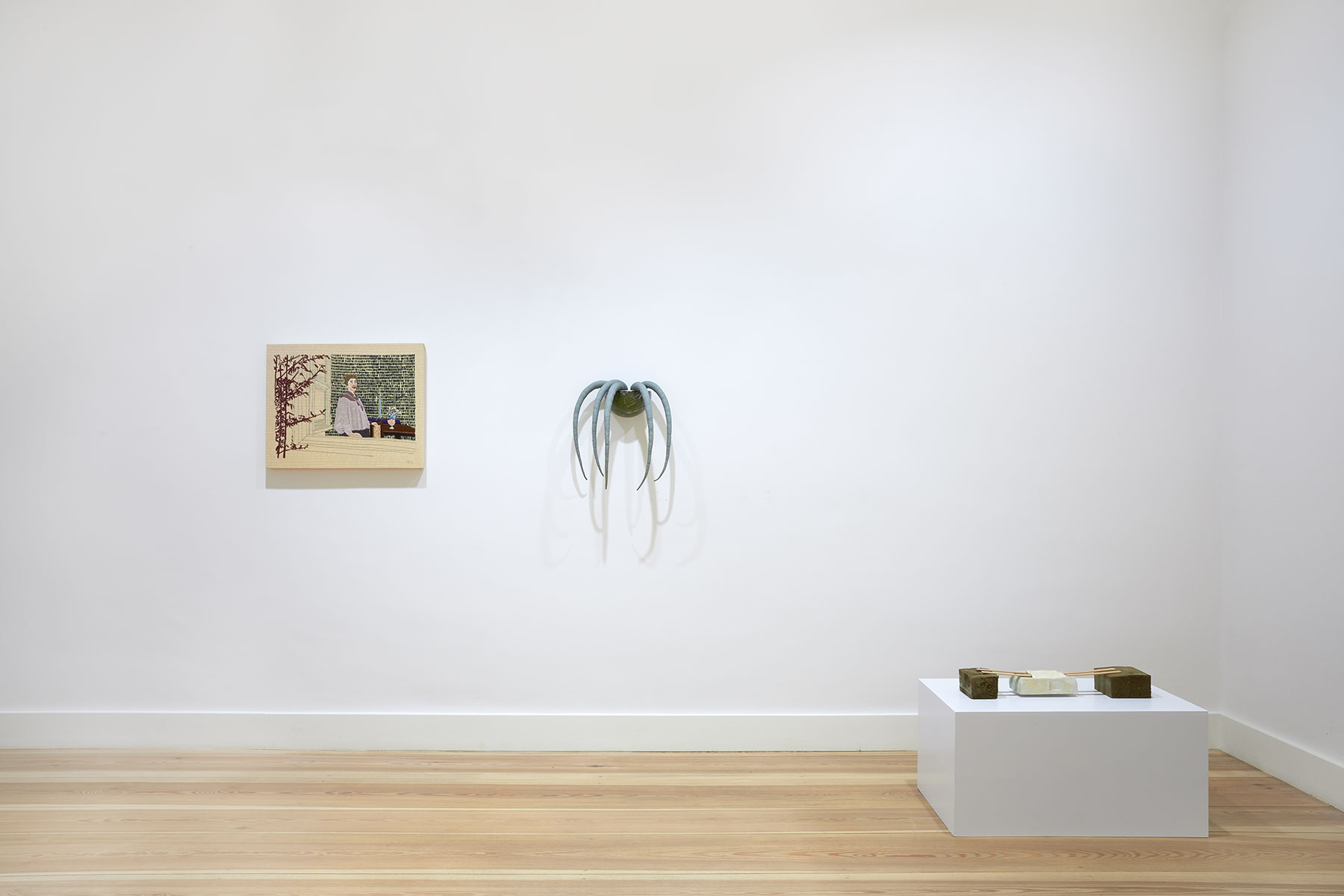
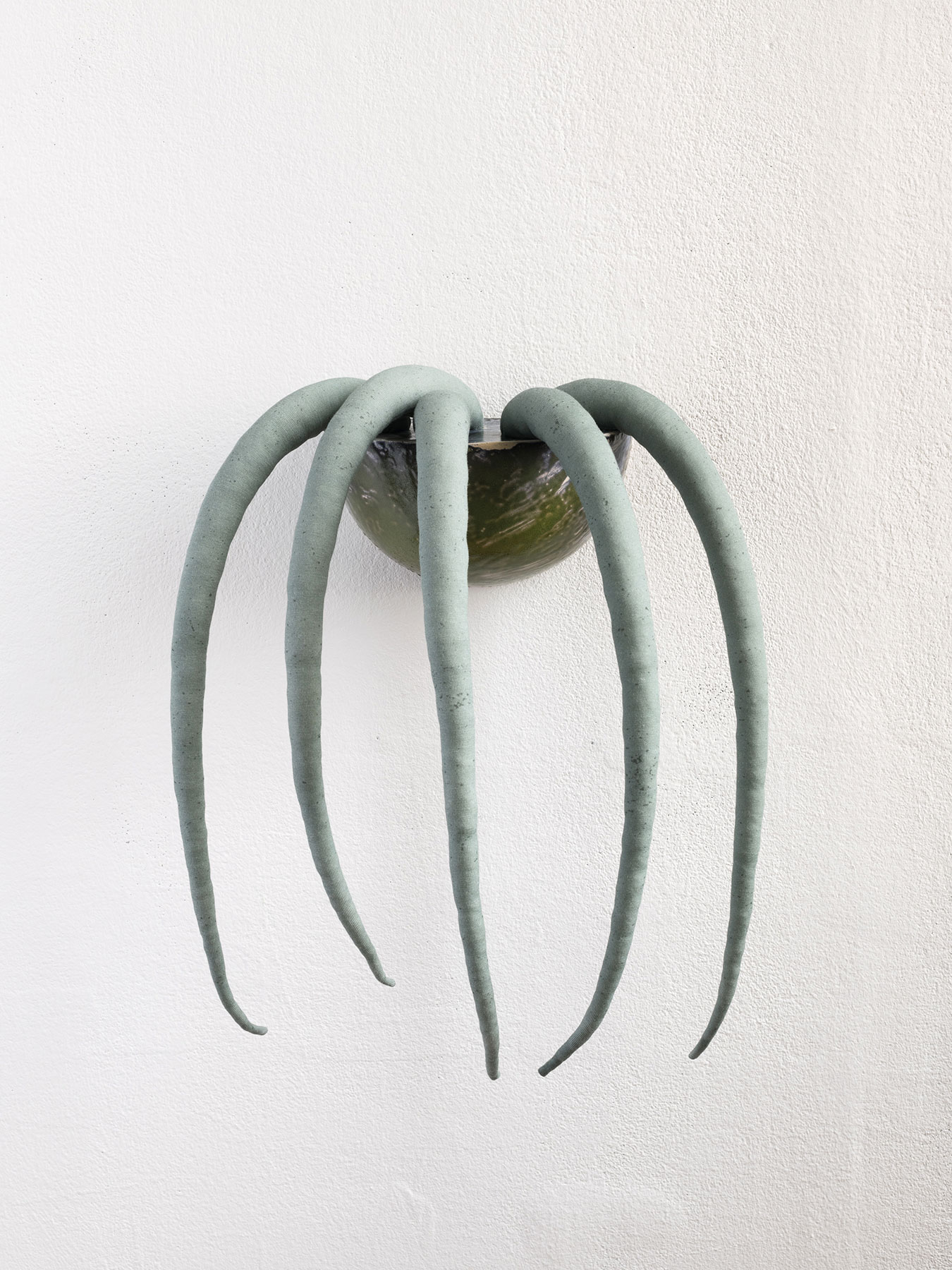
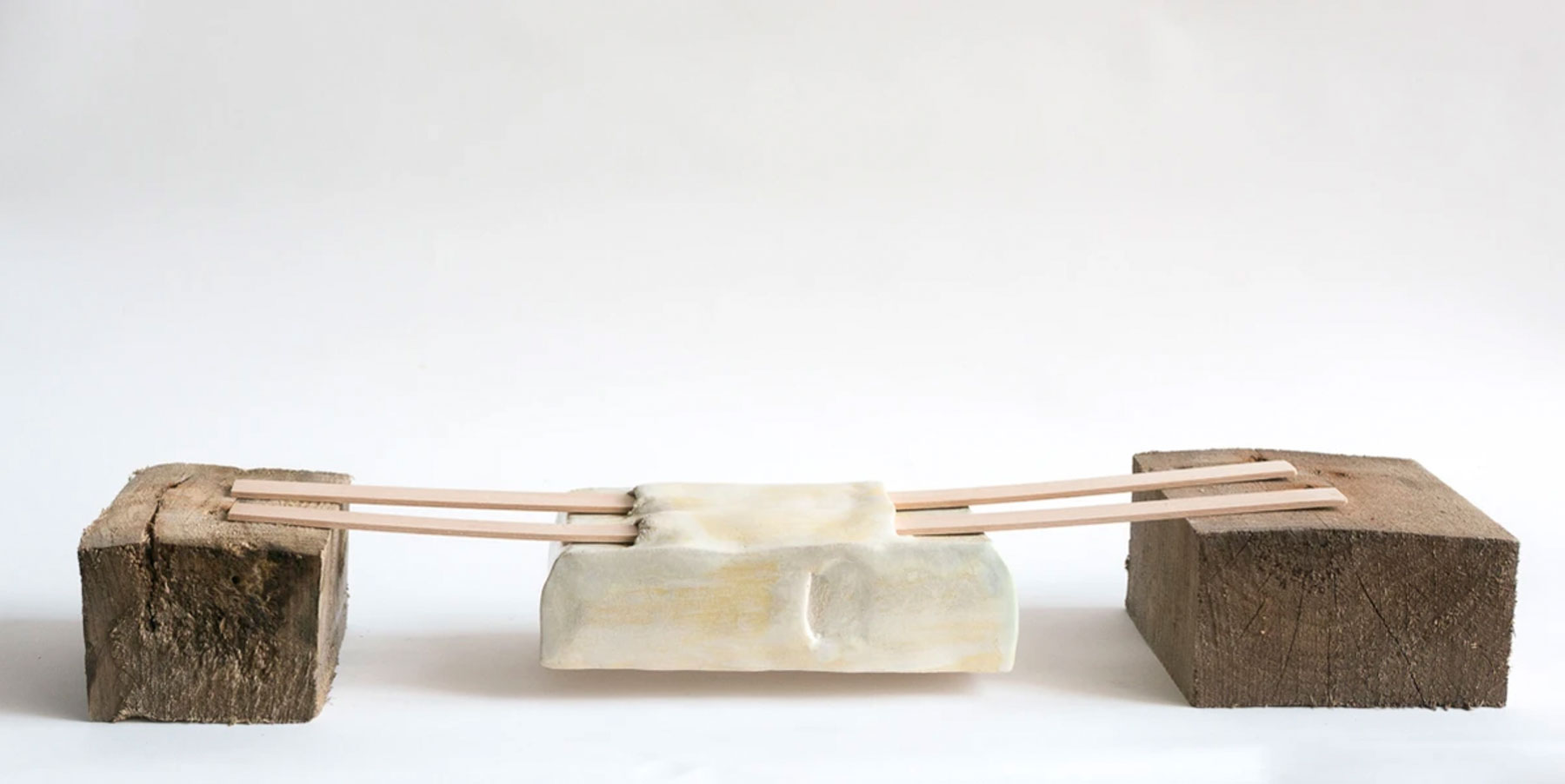
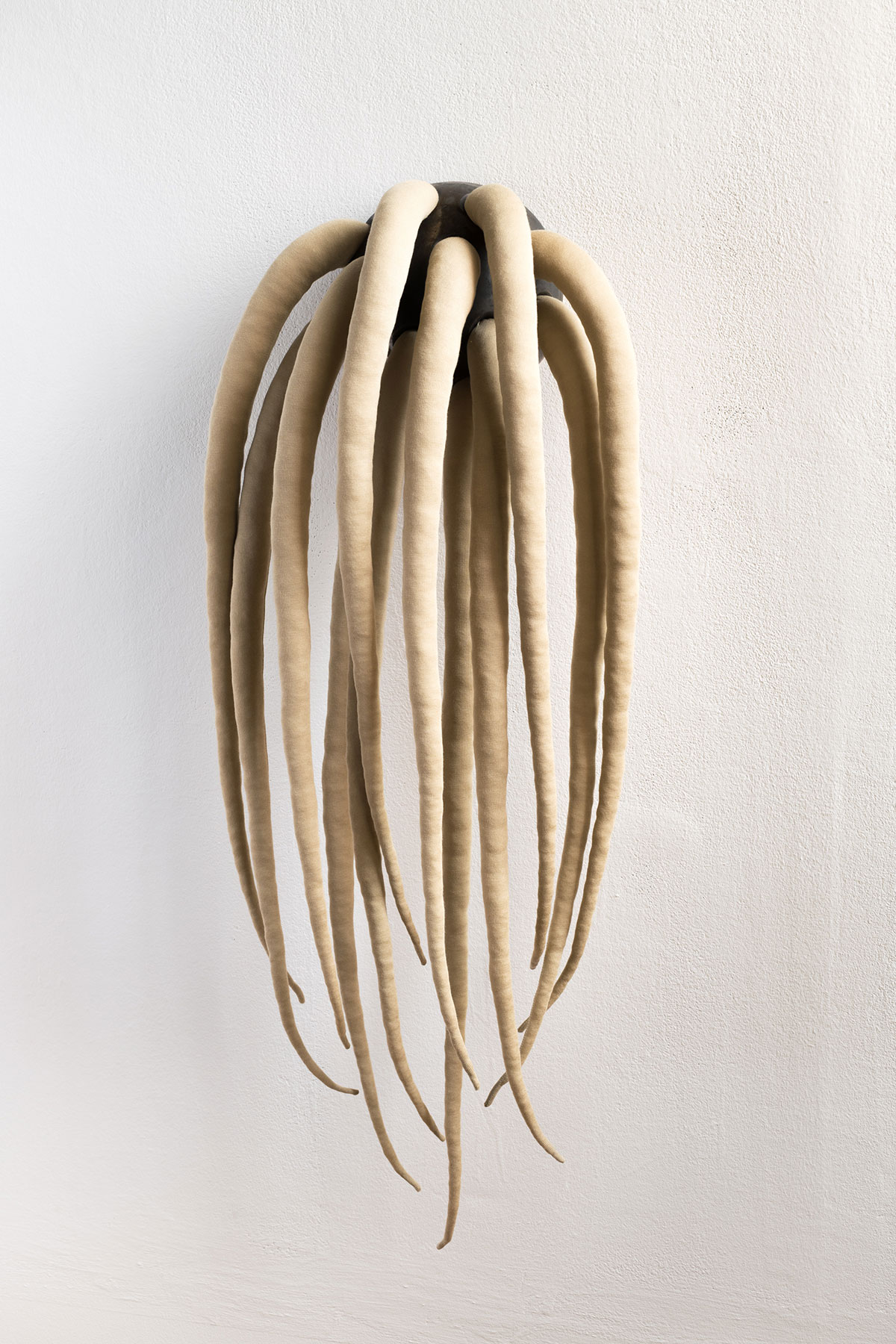
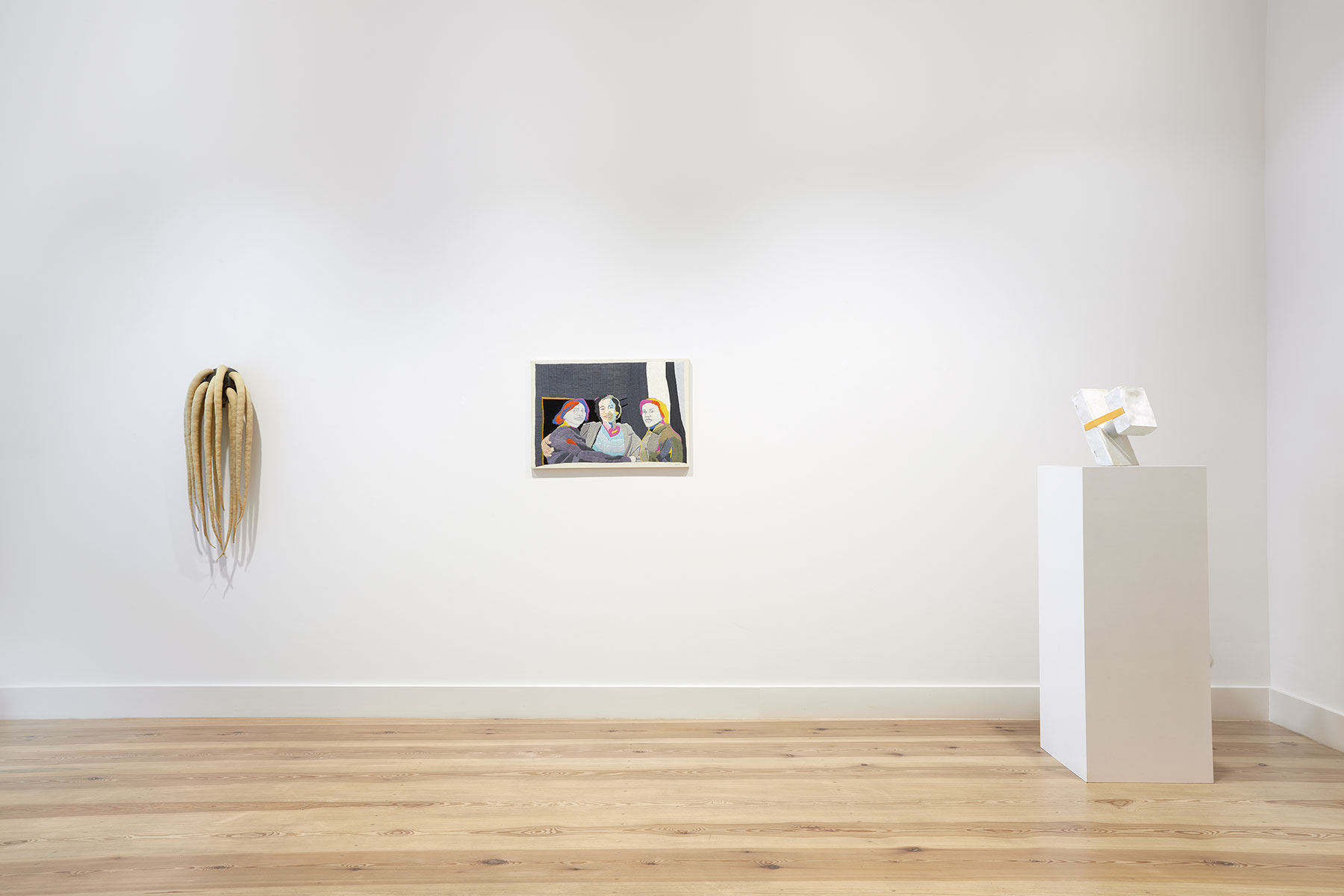
he – she – it
Es ist die Sache des Menschen Grenzen zu befragen. Sie werden ausgeweitet, verschoben und überschritten. Grenzen machen unzufrieden. So ist es auch die Sache der Künstler*innen, die Grenzen des eigenen Mediums zu erweitern. In den gezeigten Werken vollziehen die Künstler*innen Carlos Arias, Frank Mädler und Grit Schwerdtfeger die Erweiterung in der Hinwendung zum Arbeiten mit Textil und Keramik.
Die Intimität der Handarbeit verwendet Carlos Arias für die künstlerische Übersetzung alter, gefundener Familienfotos. Meist malt er mit Pinsel und Farben, für diese Arbeit legt er sie beiseite und greift zu Nadel und Faden. Er stickt und verfolgt mit Geduld das langsame Entstehen eines Gesichts oder Körpers. Carlos Arias lebt in Mexiko, eine Kultur in der das Sticken einen wichtigen Stellenwert hat. Gestickt wird sowohl von Frauen als auch queeren Männern, die durch diese Arbeit gesellschaftliche Anerkennung erfuhren. Sie entwarfen die aufwendigen Stickereien der indigenen Bevölkerung und führten sie aus. Mit dem Sticken der Bilder stellt Carlos Arias, vorgefasste Meinungen über geschlechtsspezifische Arbeit in Frage.
In der Zeit des Lockdowns hängt Grit Schwerdtfeger die fotografische Arbeit vorübergehend an den Nagel und tauscht den Fotoapparat gegen die Nähmaschine. Aus farbigen Textilien entwirft sie Schläuche unterschiedlicher Längen, die sie mit Füllmaterial versieht und in einen Träger aus Keramik einfügt. Sind es Tentakeln oder Sukkulenten? Walrosszähne oder Haare? Sie erscheinen in ihren Halterungen mehrfach deutbar, pflanzlich, körperlich oder ex-terrestrisch ein Himmelskörper zu sein.
Der Künstler Frank Mädler hat die Fotografie von vornherein nicht als Dokument, sondern als künstlerisches Mittel begriffen. Für ihn bedeutet der Schritt in ein anderes Medium, die Ausweitung der bildnerischen Möglichkeiten. Unabhängig von jeder keramischen Tradition schafft er Objekte, die sich zum Teil mit der fotografischen Arbeit verbinden, in dem sie dort entwickelte Elemente skulptural umsetzen, aber auch frei entstehen. Eine Innovation sind die Bänder und Schnallen, die er hinzufügt. Als farbiger Zusatz zu den glasierten Objekten haben sie vielseitige Funktionen. Sie dienen der Aufhängung und dem Binden, oder einfach als zeichnerische Linie.
Carlos Arias Vicuña (1964 in Santiago) studierte Kunst an der Universidad de Chile. Er lebt in Mexiko, wo er seit 1988 Malerei an der Universidad de los Americas in Puebla lehrt. Er hatte zahlreiche internationale Einzel- und Gruppenausstellungen u.a First Liverpool Biennalen, ARS 01 Kiasma, Helsinki, San Diego Museum of Art USA und Museum Beelden an Zee Den Hague, Neomexicanismos, MAM, Mexico City, UDLAP Puebla, Mexiko, Museo de Artes Visuales Santiago Chile. Seine Arbeiten finden sich privat und öffentlich in namhaften Sammlungen.
Grit Schwerdtfeger (1971 in Anklam) lebt in Leipzig. Dort hat sie an der Hochschule für Grafik und Buchkunst studiert. Sie hat zahlreiche Auszeichnungen erhalten, darunter ein DAAD-Stipendium für Kuba und einen einjährigen Aufenthalt an der Fakultät für Bildende Künste in Madrid. Ihre Arbeiten befinden sich in privaten und öffentlichen Sammlungen – den Staatlichen Kunstsammlungen sowie dem Kupferstichkabinett Dresden und der Sammlung des Lentos Kunstmuseums Linz – in England, Frankreich, Österreich, Belgien, Deutschland und Kanada. Sie ist Teil des Fotografenkollektivs lux. Von 2012 – 2022 lehrte sie an der Ostkreuzschule für Fotografie in Berlin.
Frank Mädler (*1963 in Torgelow) studierte Fotografie an der Hochschule für Grafik und Buchkunst Leipzig, der Universidad Complutense de Madrid und der Universidad Castilla-La Mancha, Cuenca. Heute lebt er in Leipzig. Er wurde mit zahlreichen Preisen ausgezeichnet, u.a. mit dem Stipendium der Villa Massimo, Rom, dem Stipendium der Kulturstiftung des Freistaats Sachsen und der Künstlerresidenz Al Lado in Lima, Peru. Seine Arbeiten befinden sich in öffentlichen und privaten Sammlungen wie der American Bank Collection, der Fondation Antoine de Galbert Paris, der Art Gallery of Ontario, Kanada, dem Kupferstichkabinett Dresden, der Altana Kunstsammlung, der Sammlung Deutsche Telekom sowie den Staatlichen Kunstsammlungen Dresden.
he – she – it
It is the business of humans to question limits. They are expanded, shifted, and transgressed. Limits make us discontent. Therefore, it is also the business of artists to expand and transgress the limits of their own medium. In the works shown, the artists Carlos Arias, Frank Mädler, and Grit Schwerdtfeger expand limits by working with textiles and ceramics.
Carlos Arias uses the intimacy of needlework for the artistic translation of old, found family photographs. Usually, he paints with a brush and paint, but for this work he put those aside and uses needle and thread instead. With great patience, he embroiders a face or body and carefully traces its emergence. Carlos Arias lives in Mexico, a culture where embroidery is highly valued. It is an art practiced mainly by women and queer men who received social recognition through this work. They designed and executed the elaborate embroideries of the indigenous population. By embroidering these images, Carlos Arias questions preconceived notions about gender-specific work.
During the time of the lockdown, Grit Schwerdtfeger gave up her work as a photographer for a while, and exchanged the camera for a sewing machine. Using colorful textiles, she created tubes of various lengths that she stuffed with filling material and put into supports made of ceramic. Are these tentacles or succulents? The teeth of a walrus or hair? In their supports, they can be interpreted in a variety of ways: they might be plants, bodies, or even extraterrestrial, celestial bodies.
From the outset, the artist Frank Mädler saw photography not as a form of documentation, but as a means for artistic expression. For him, the step into another medium means an expansion of artistic possibilities. Independent of any ceramic tradition, he has created objects that are partly linked to his photographic works by realizing elements sculpturally that he had already developed in his photographs, but some sculptures have no model at all. One innovation are the straps and buckles that he adds. As a colourful addition to the glazed objects, they have numerous functions. They can be used to hang the objects up, to tie them, and sometimes they simply serve as a graphic line.
Carlos Arias Vicuña (born in 1964 in Santiago) studied art at the Universidad de Chile. He lives in Mexico, where he has taught painting at the Universidad de los Americas in Puebla since 1988. He has had numerous solo and group exhibitions, including at the First Liverpool Biennale, ARS 01 Kiasma, Helsinki, the San Diego Museum of Art, USA, und Museum Beelden an Zee in The Hague, Neomexicanismos, MAM, Mexico City, UDLAP Puebla, Mexico, and the Museo de Artes Visuales Santiago, Chile. His works can be found in renowned public and private collections.
Grit Schwerdtfeger (born in 1971 in Anklam) lives in Leipzig, where she studied photography at the Hochschule für Grafik und Buchkunst. Grit Schwerdtfeger has received numerous prizes, including a DAAD fellowship for Cuba and studies at the Faculty for Fine Arts in Madrid. Her works can be found in private as well as public collections, in Dresden in the Staatliche Kunstsammlungen and the Kupferstichkabinett, the collection of the Lentos Kunstmuseum Linz, as well as in collections in England, France, Austria, Belgium, Germany, and Canada. She is a member of the photographers’ collective Lux. From 2012 to 2022, she taught photography at Ostkreuzschule in Berlin.
Frank Mädler (born in 1963 in Torgelow) studied photography at the Hochschule für Grafik und Buchkunst Leipzig, the Universidad Complutense de Madrid, and the Universidad Castilla-La Mancha, Cuenca. Today he lives in Leipzig. He has received numerous awards, including the Villa Massima Fellowship in Rome, a scholarship from the Cultural Foundation of the Free State of Saxony, and the residency Al Lado in Lima, Peru. His works are in numerous public and private collections, including the American Bank Collection, the Fondation Antoine de Galbert Paris, the Art Gallery of Ontario, Canada, the Kupferstichkabinett Dresden, the Altana Kunstsammlung, the collection of Deutsche Telekom, as well as Staatliche Kunstsammlungen Dresden.
Installation views by Sandy Volz